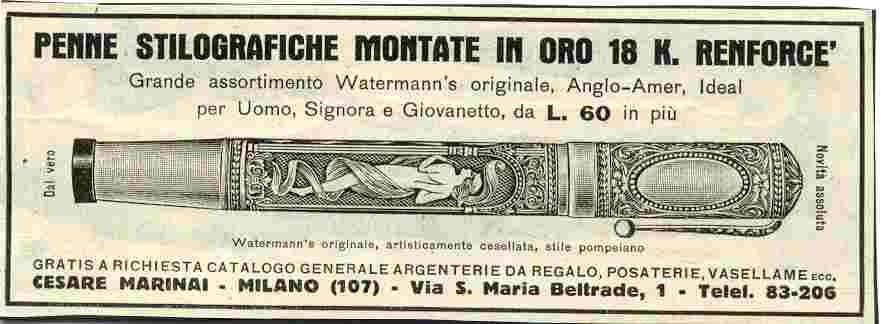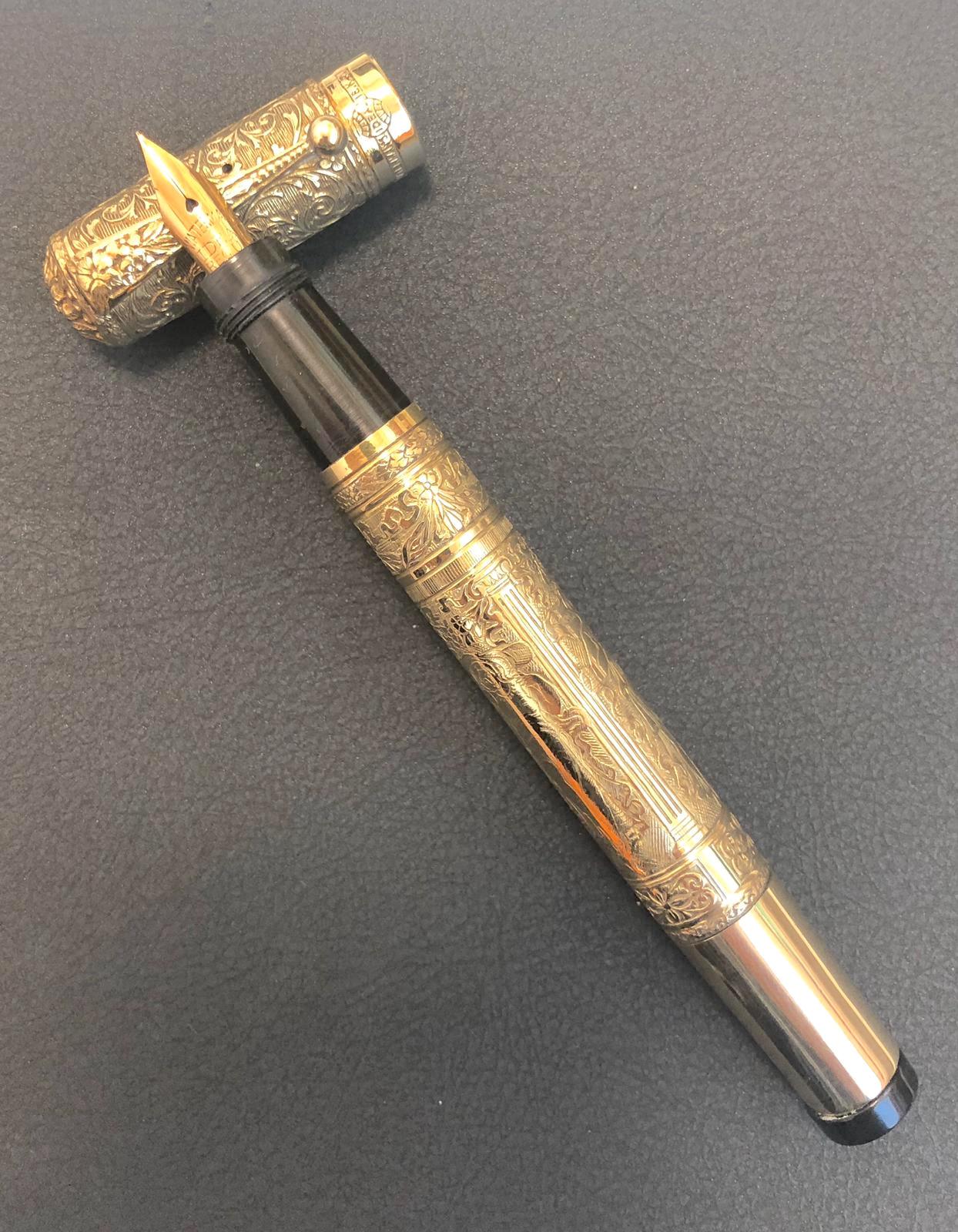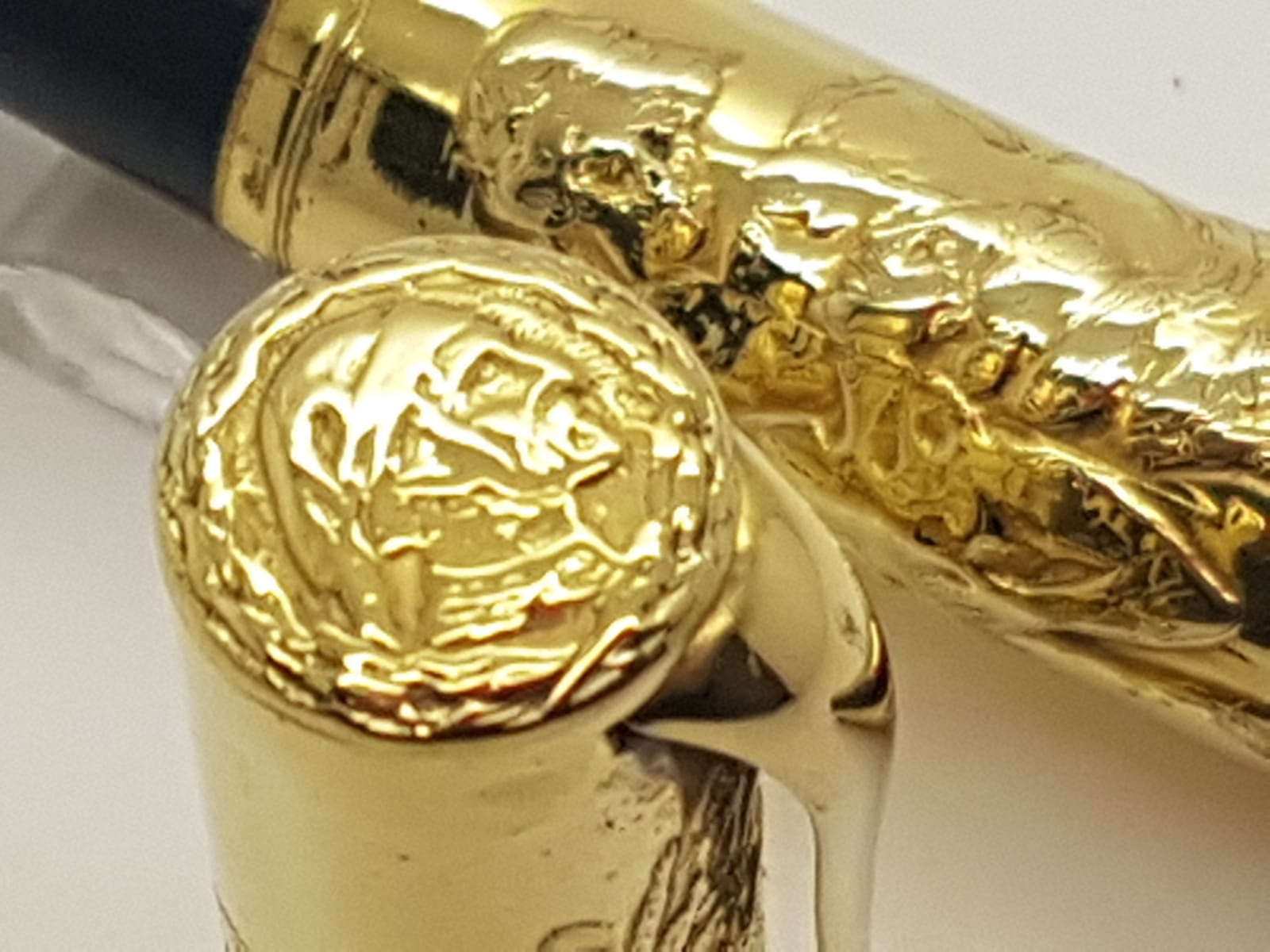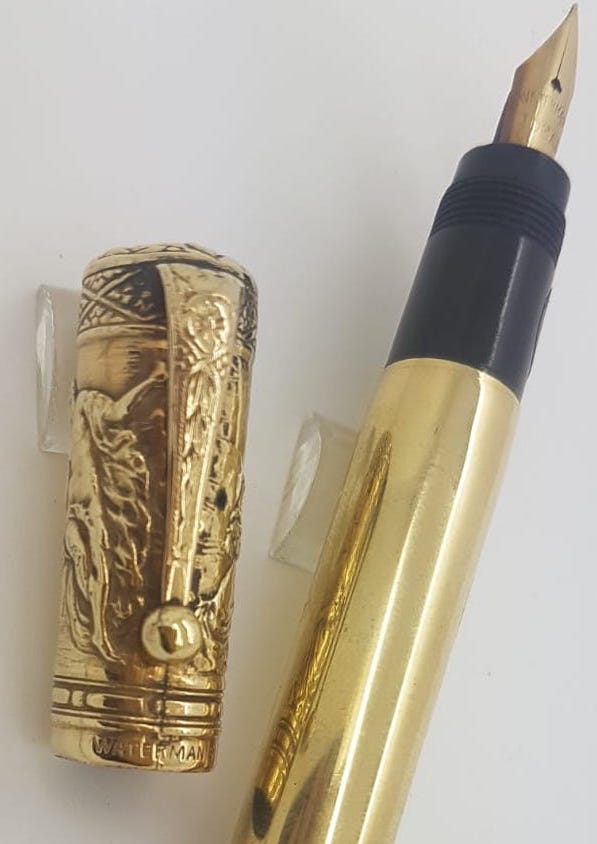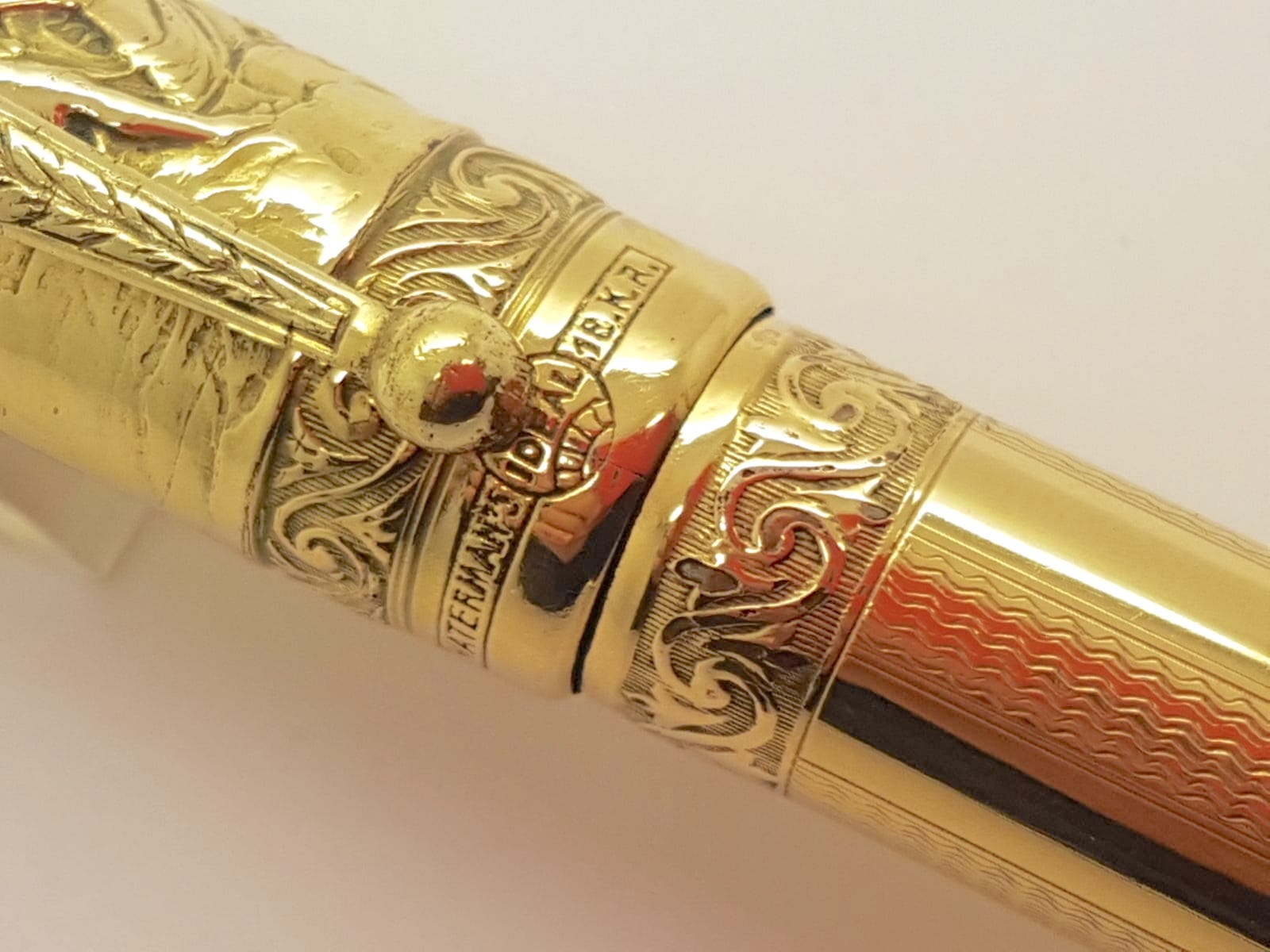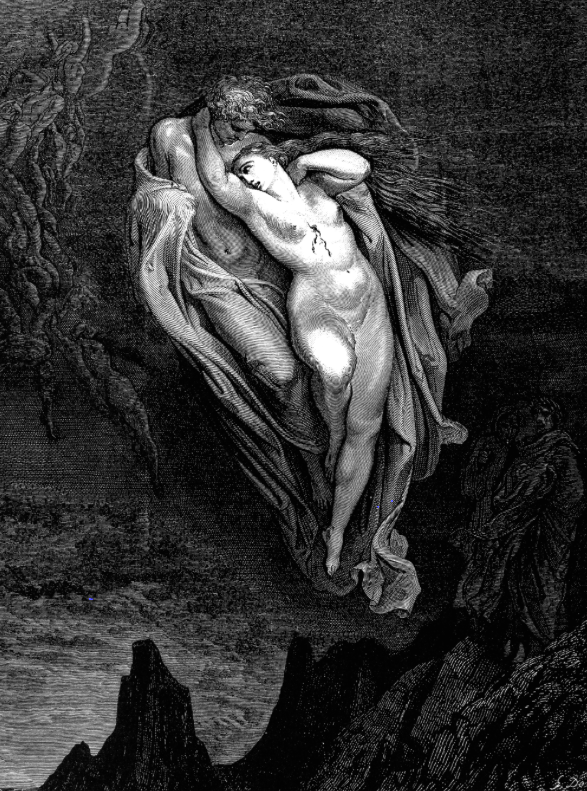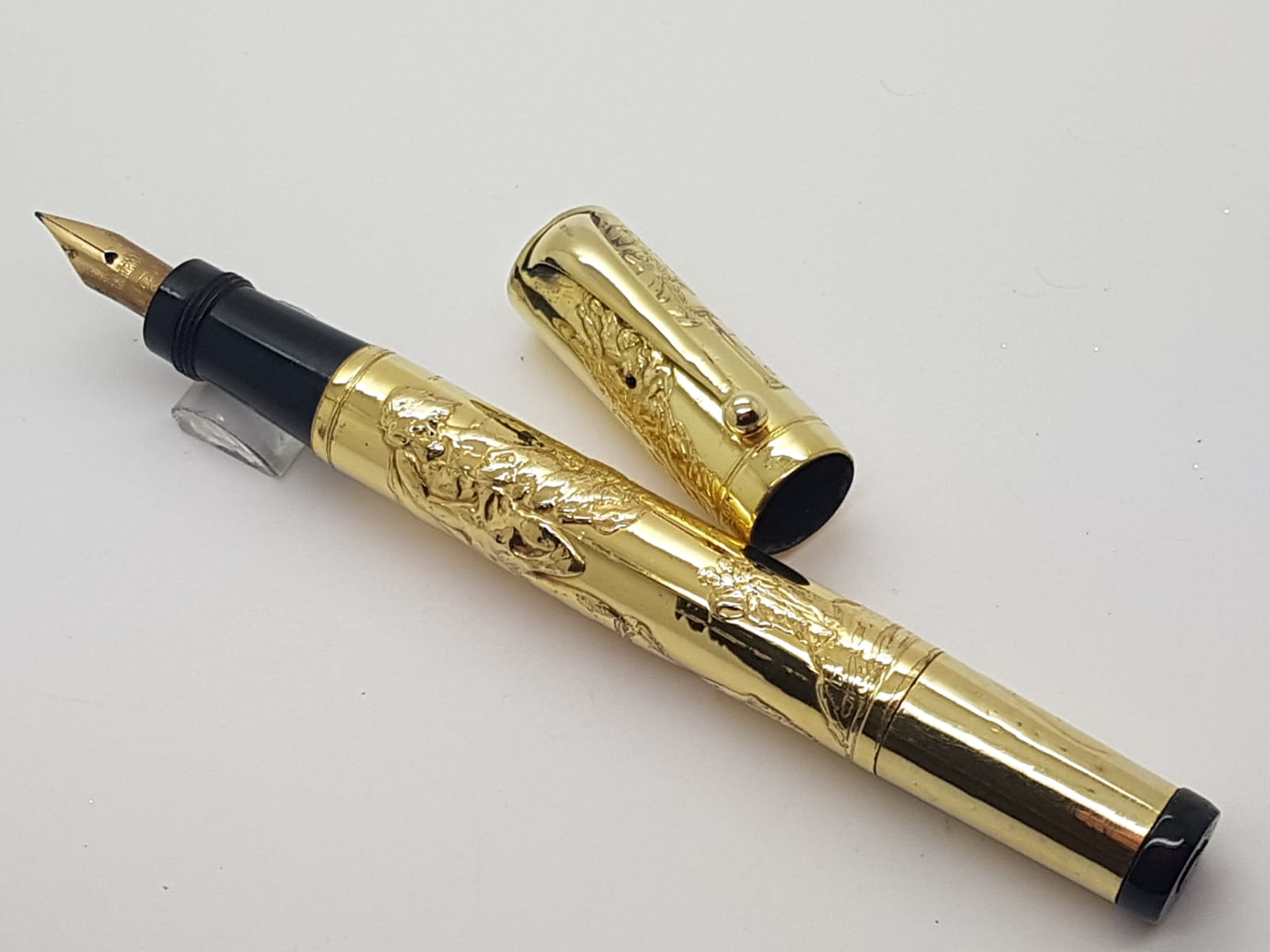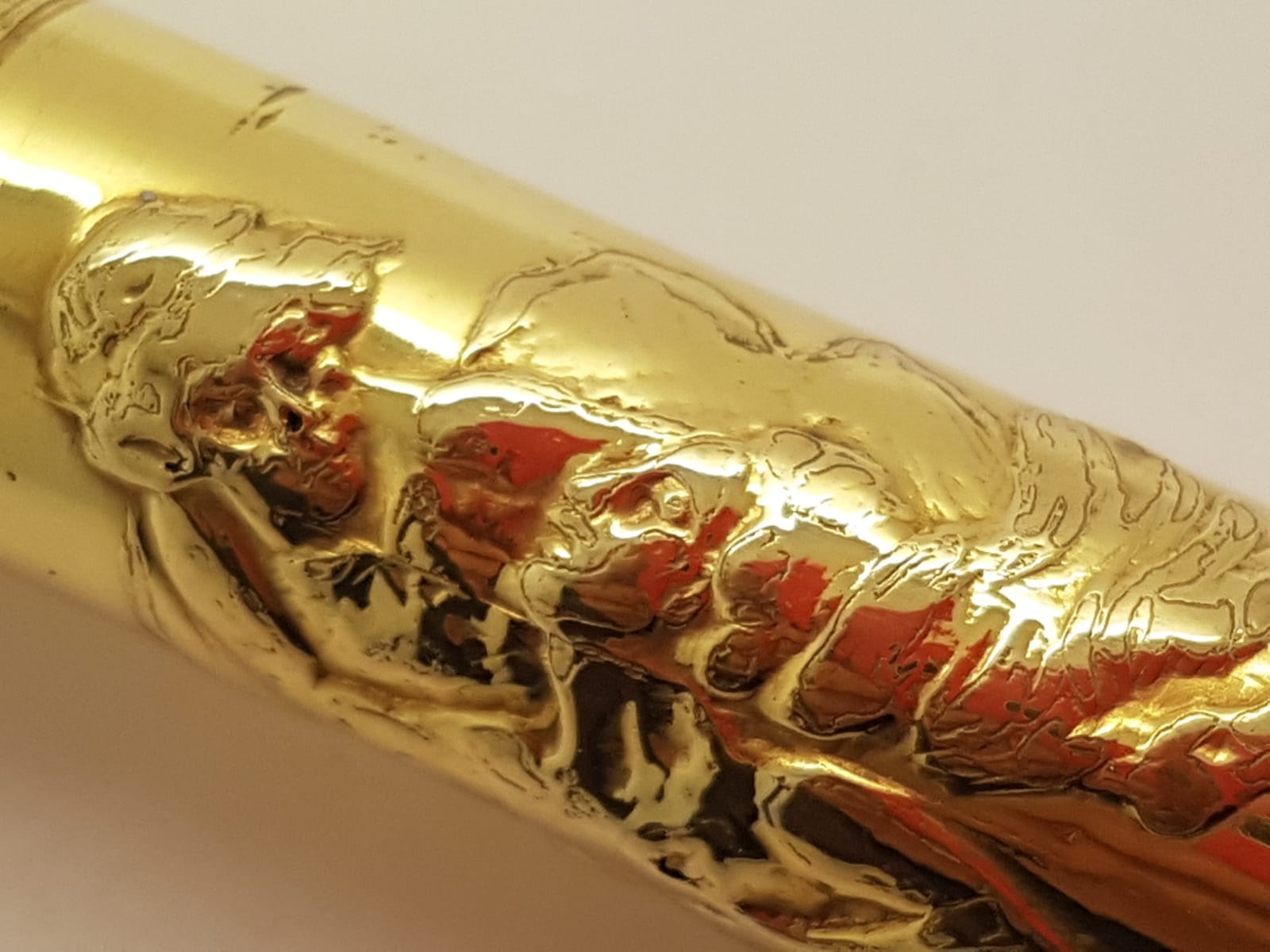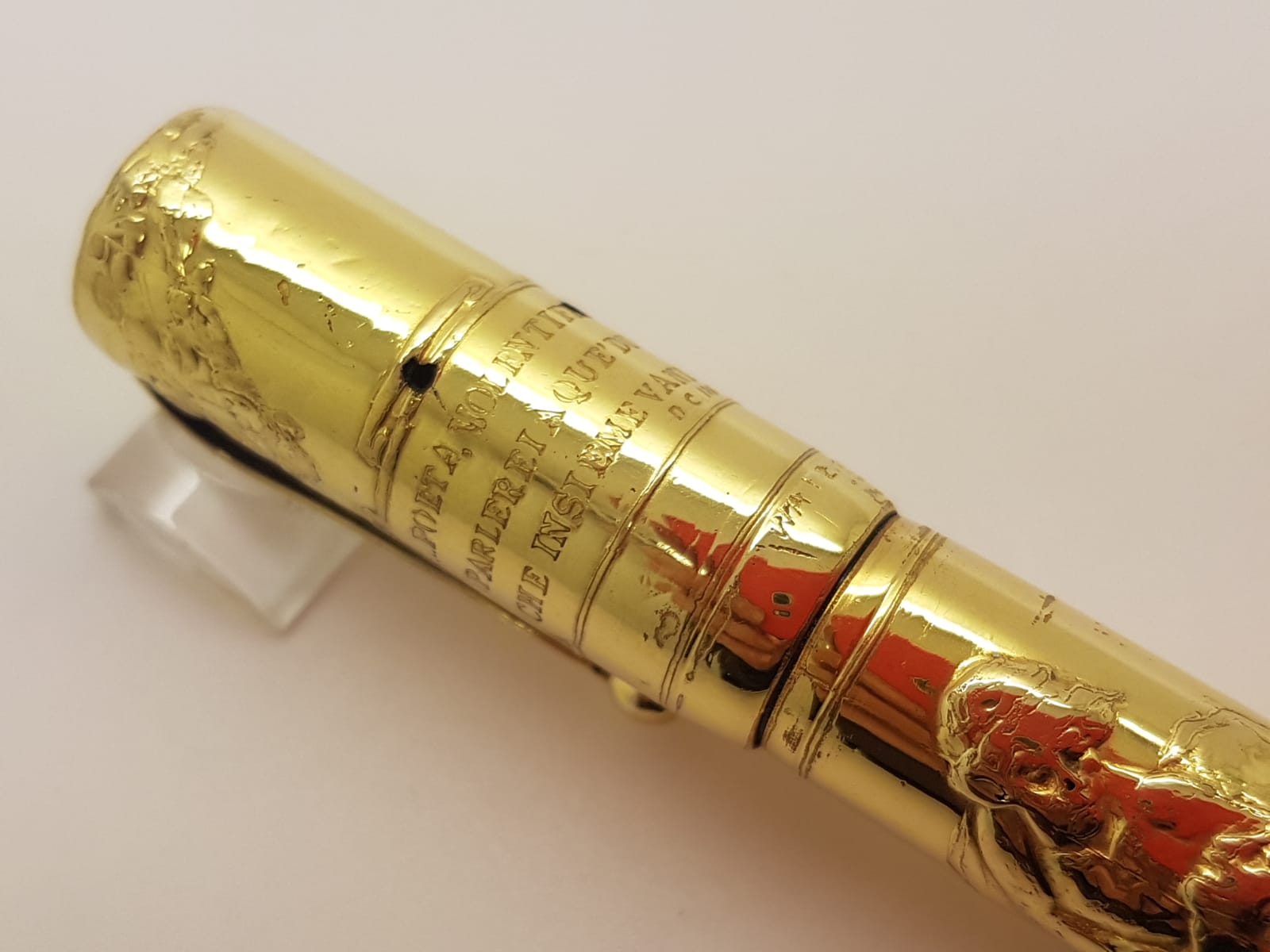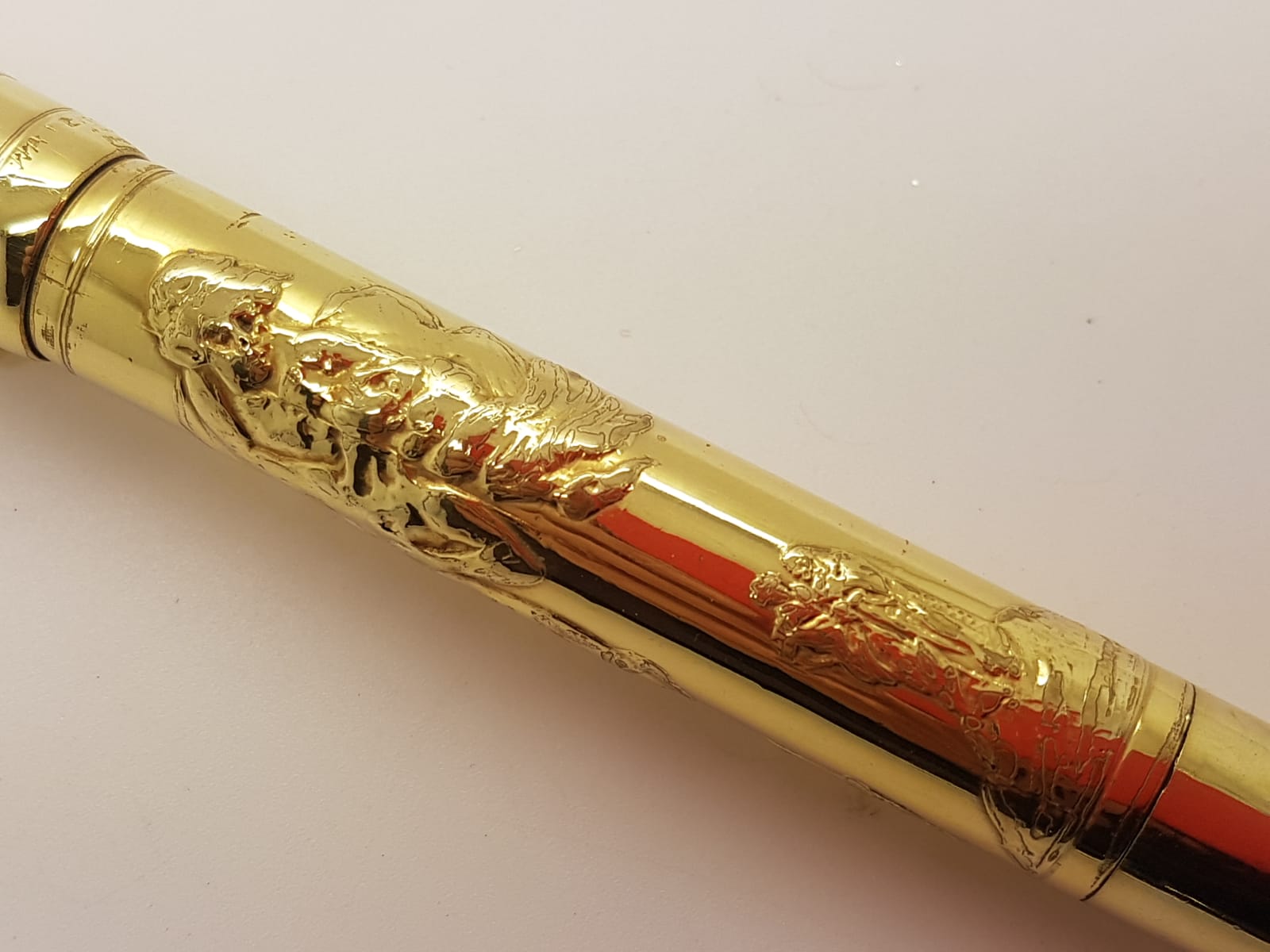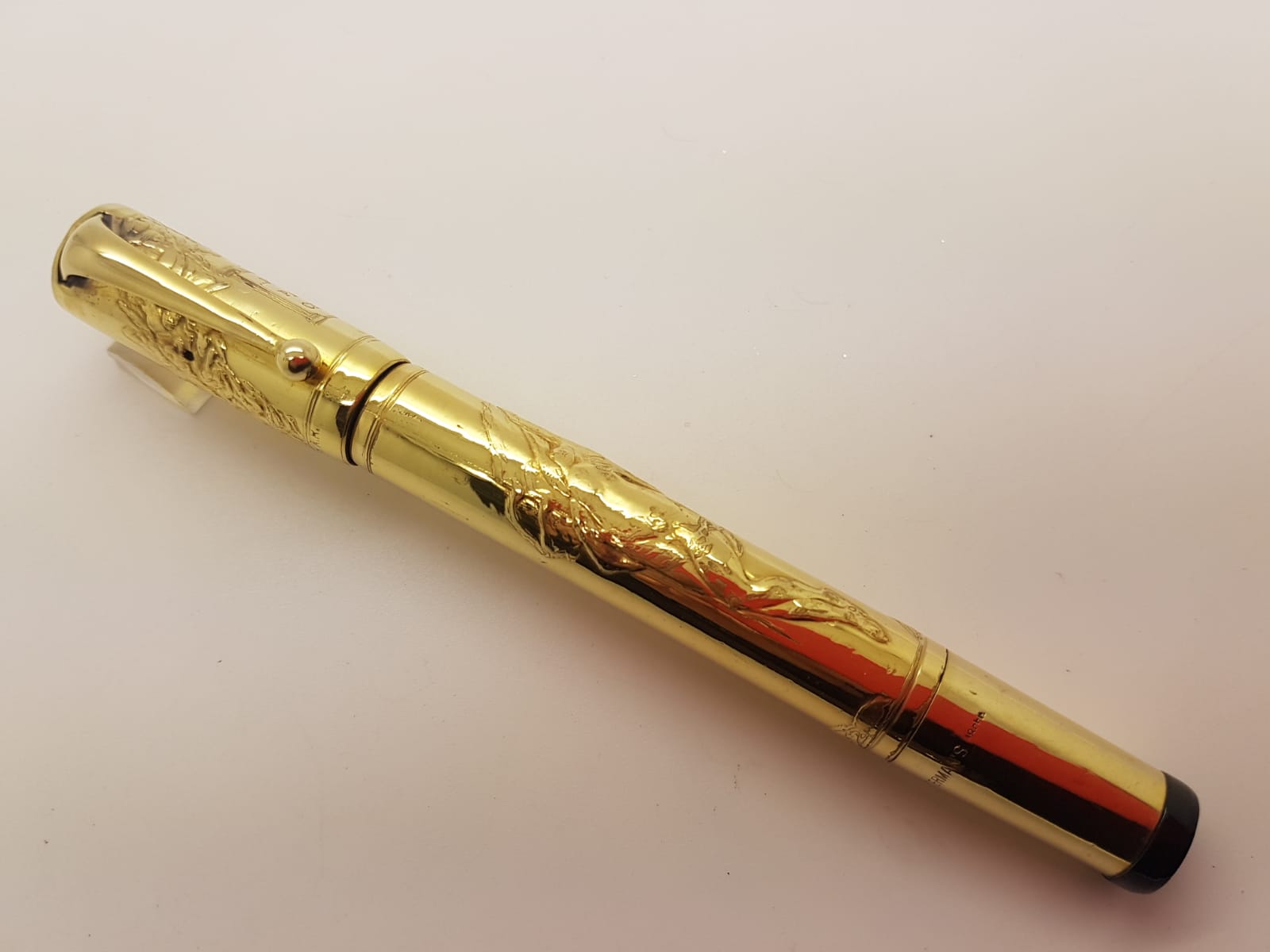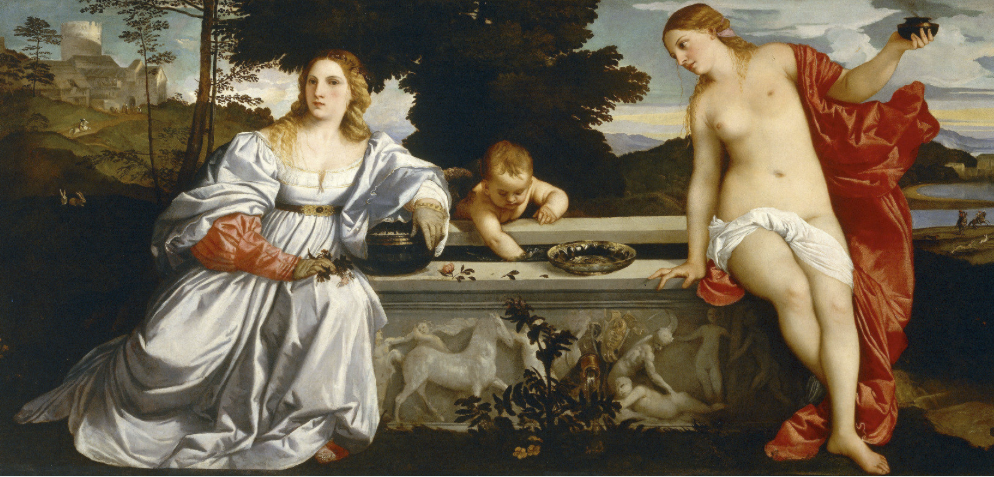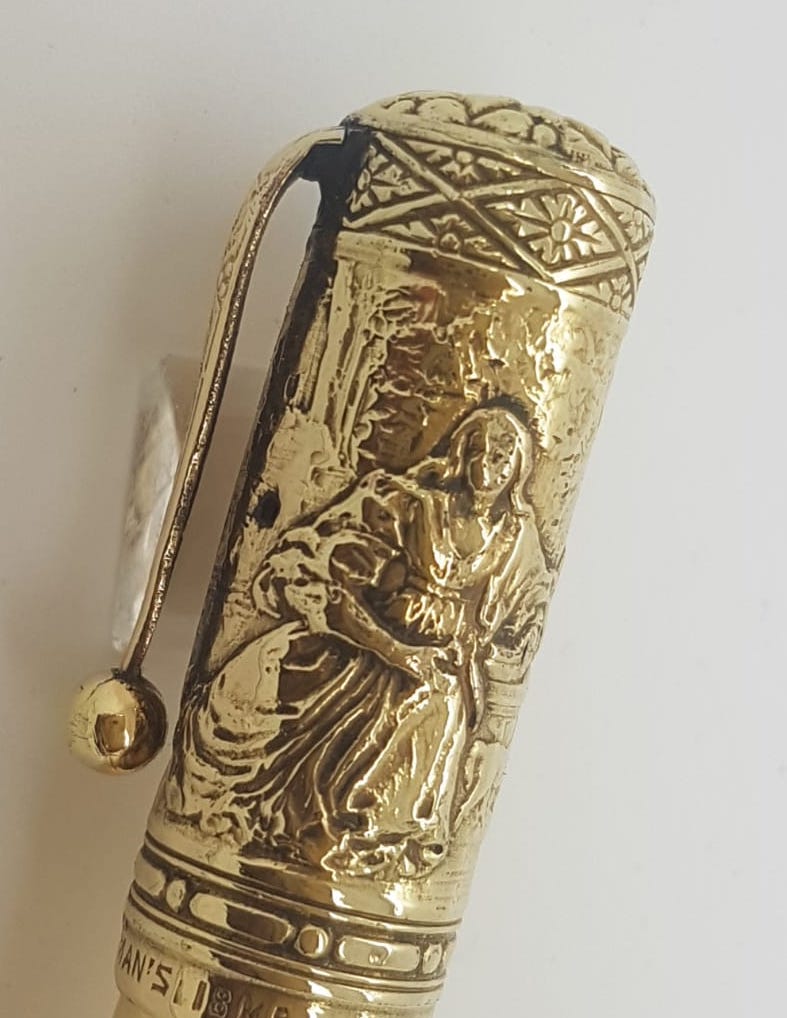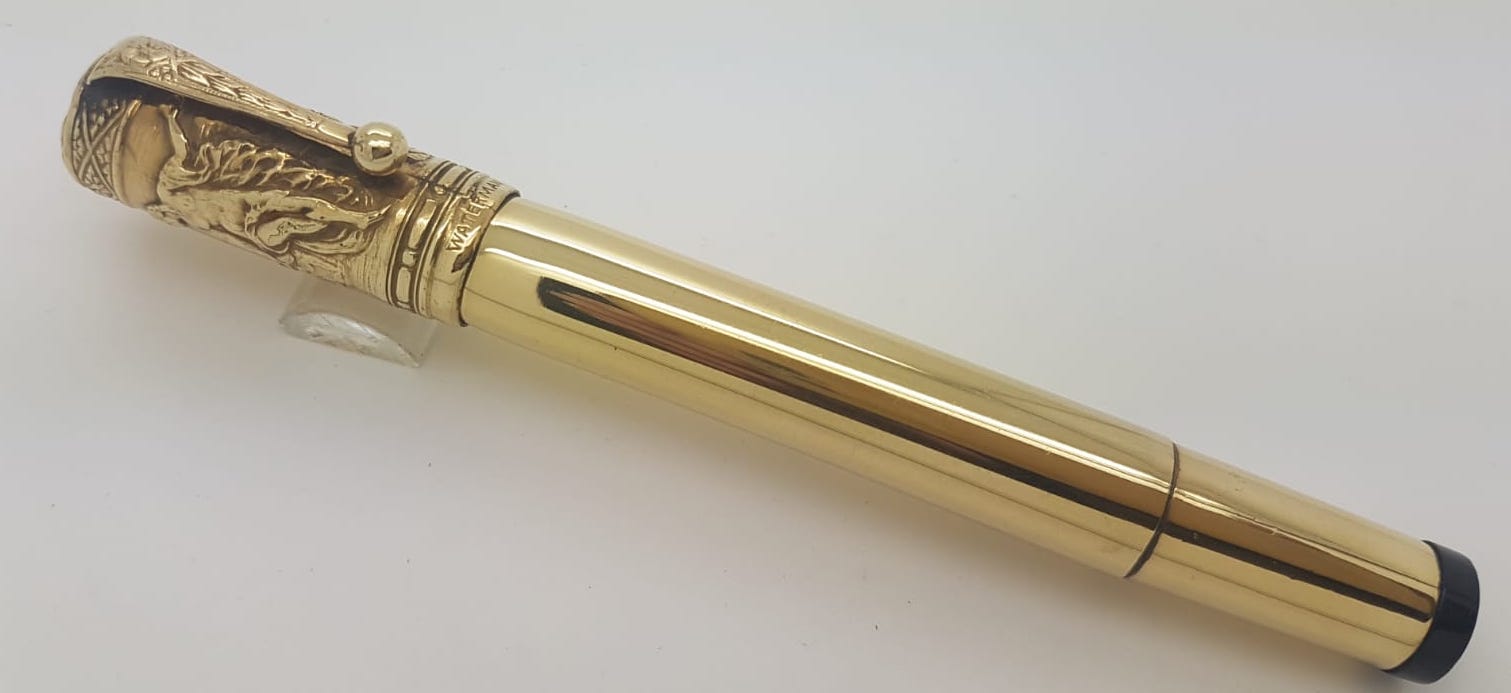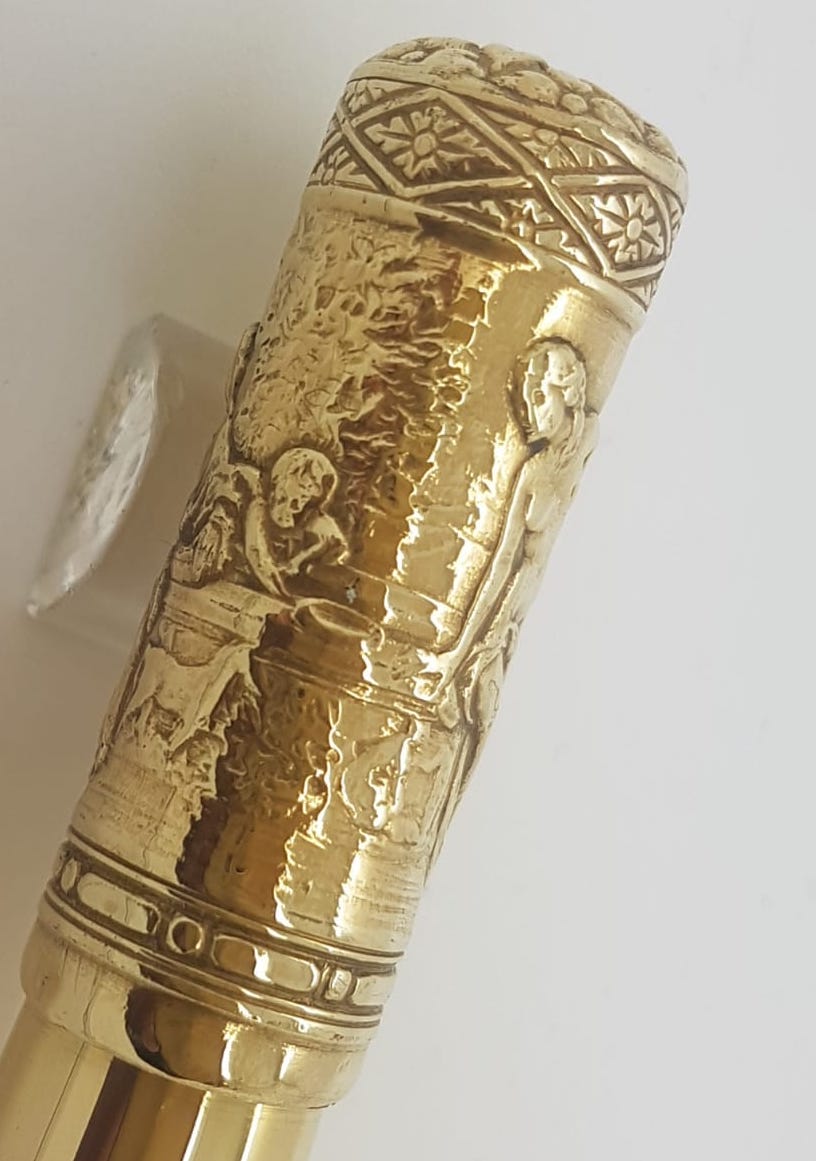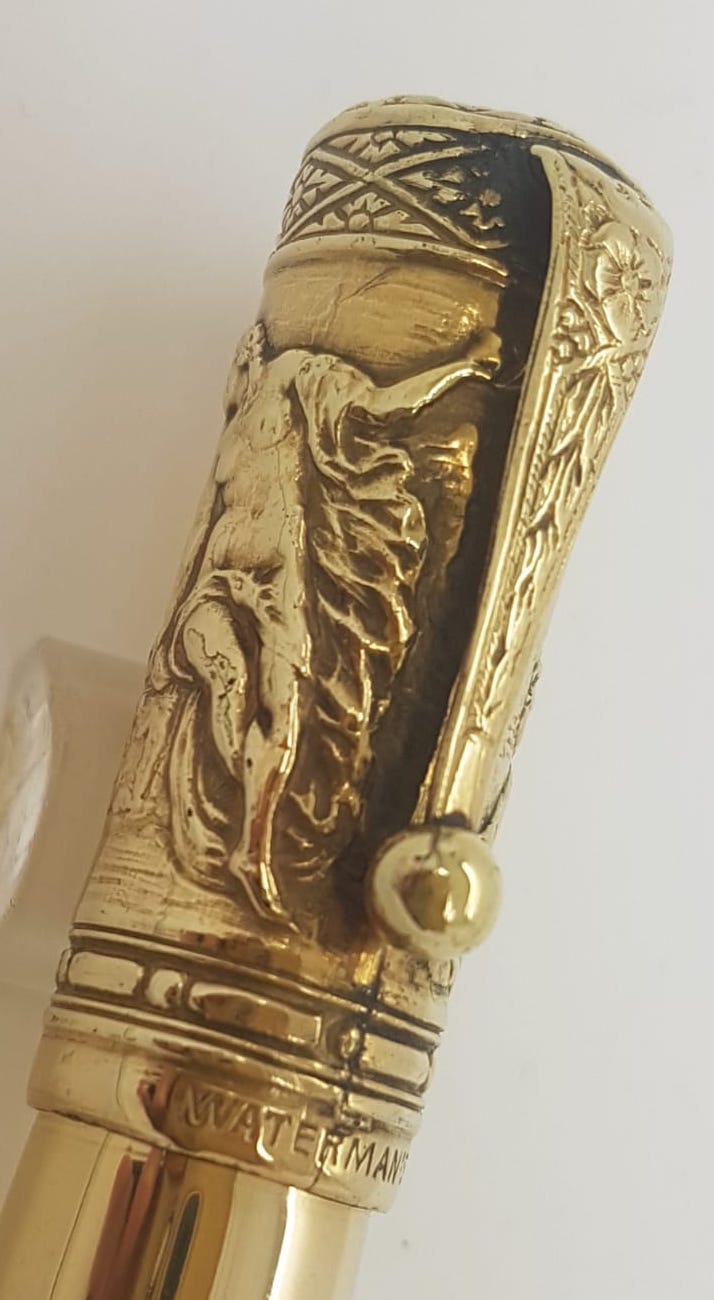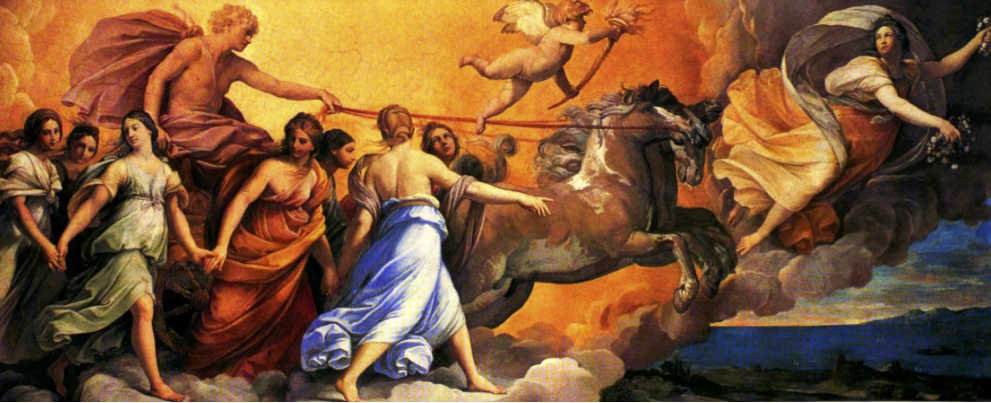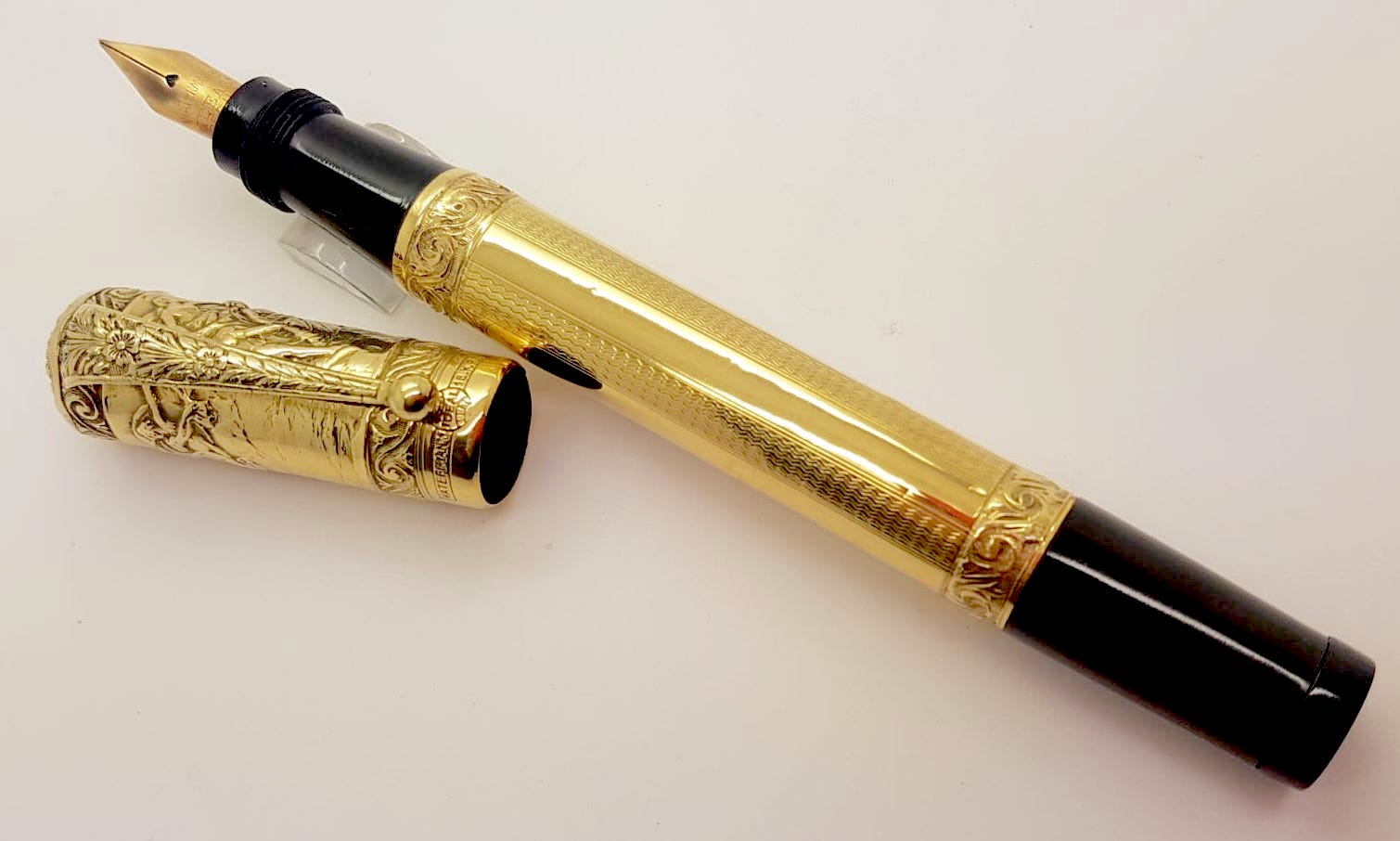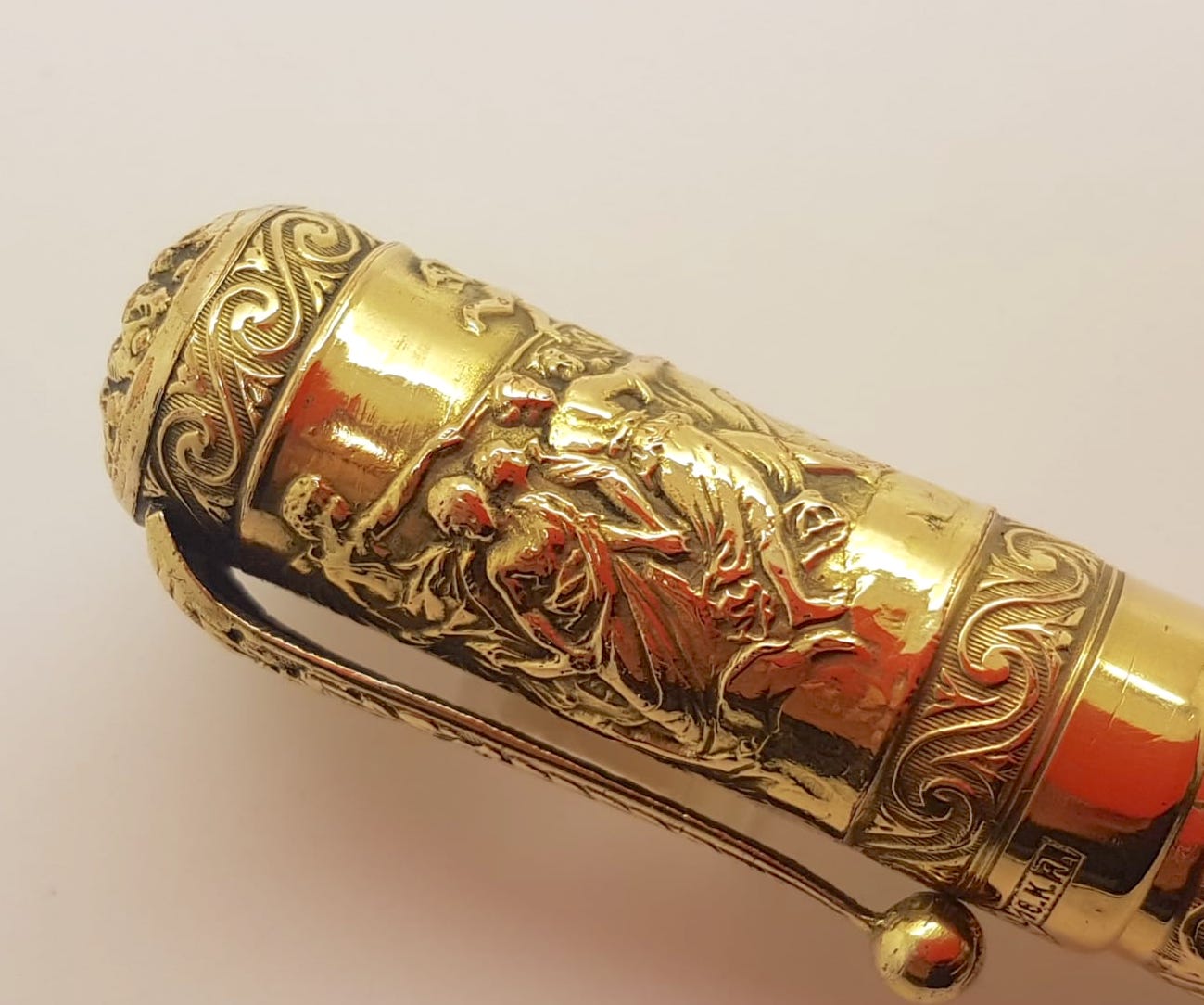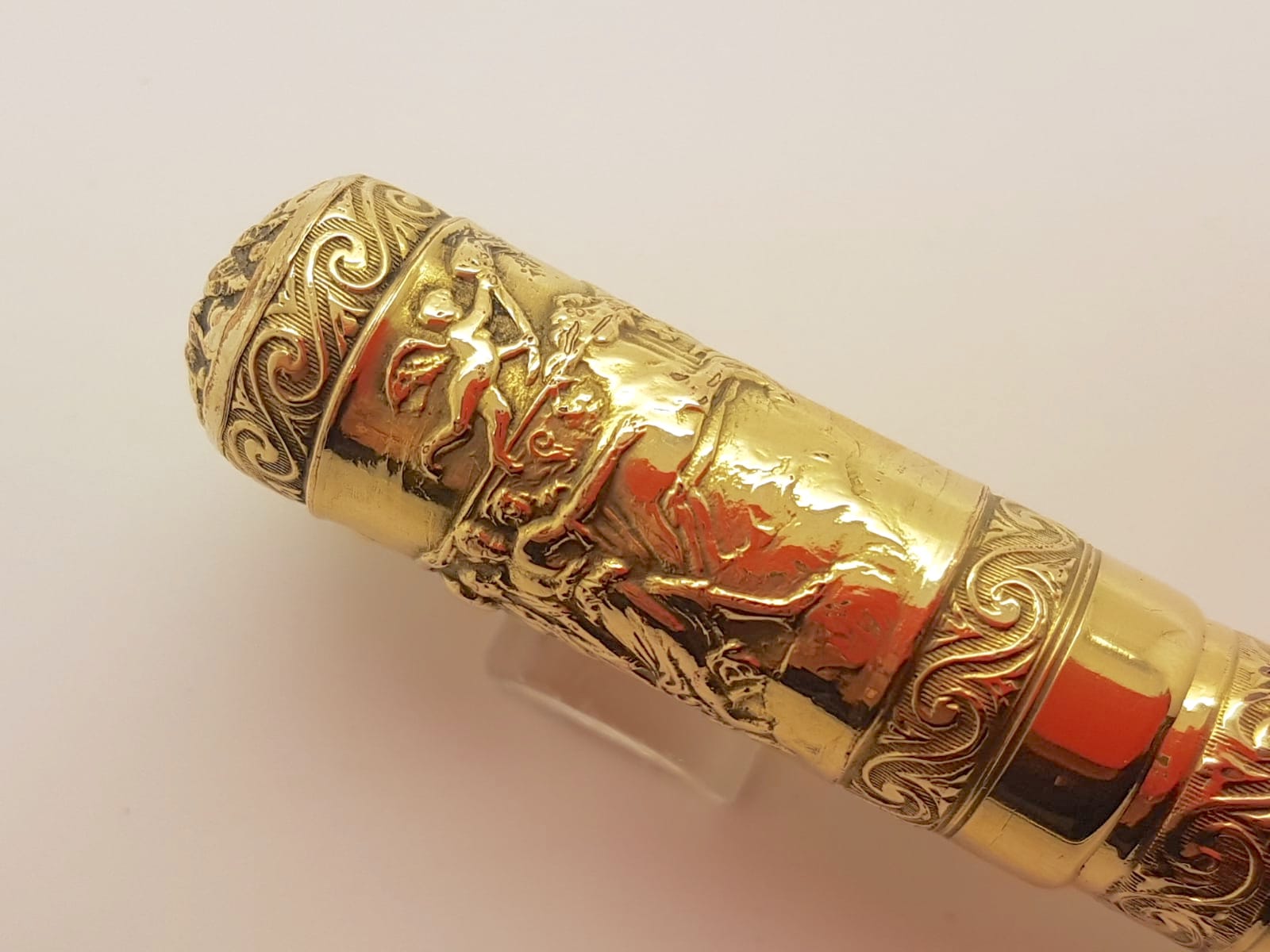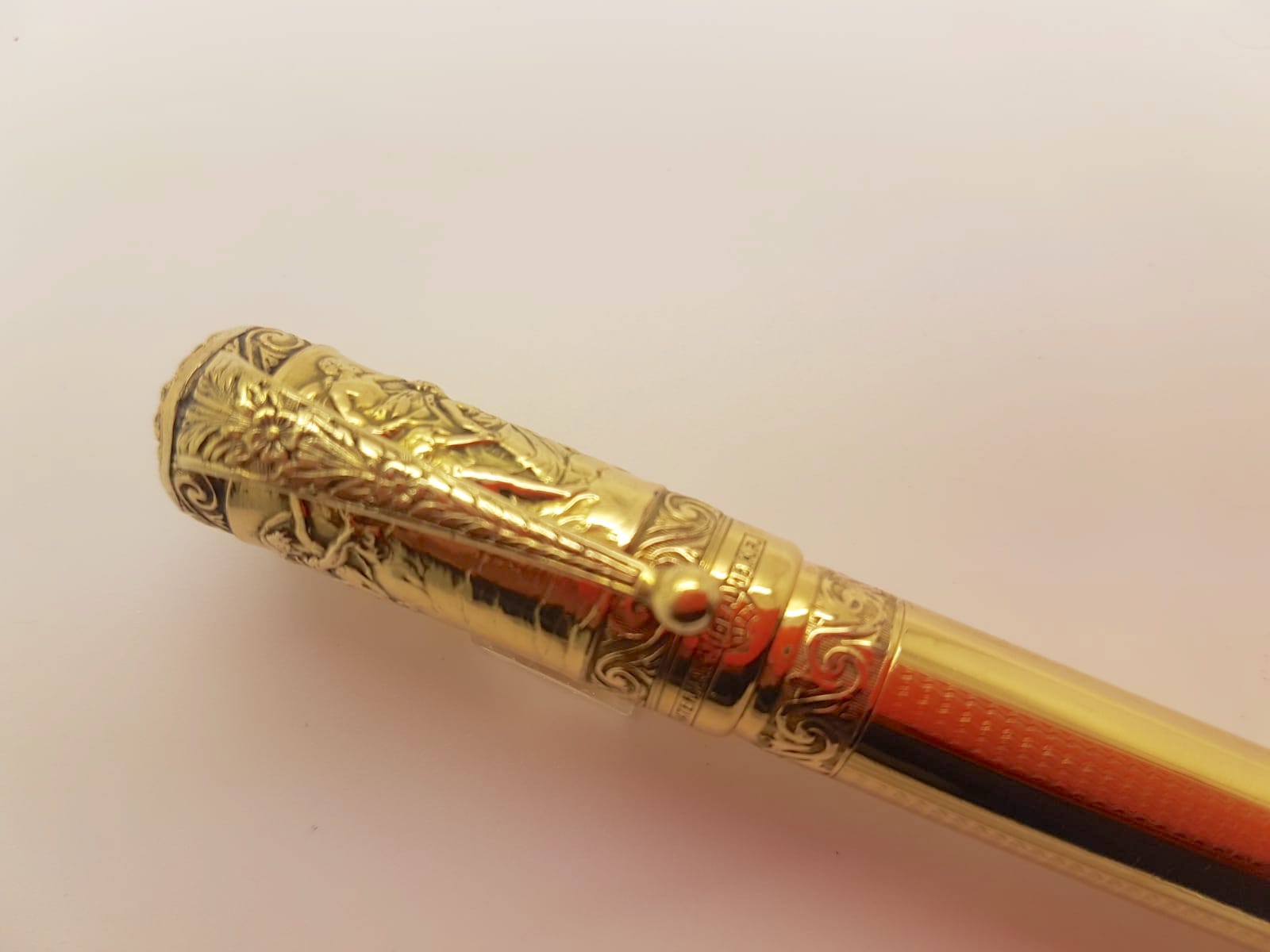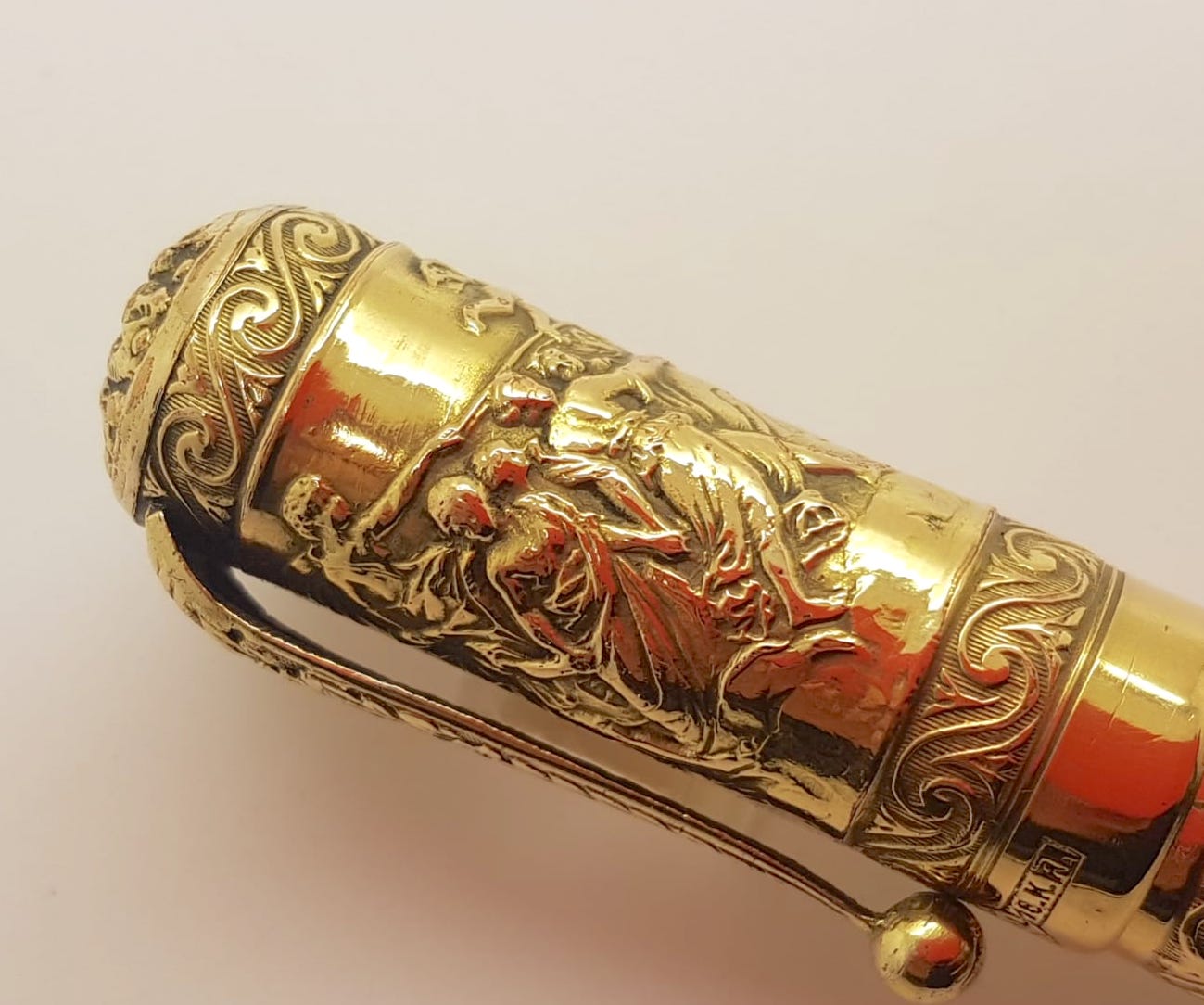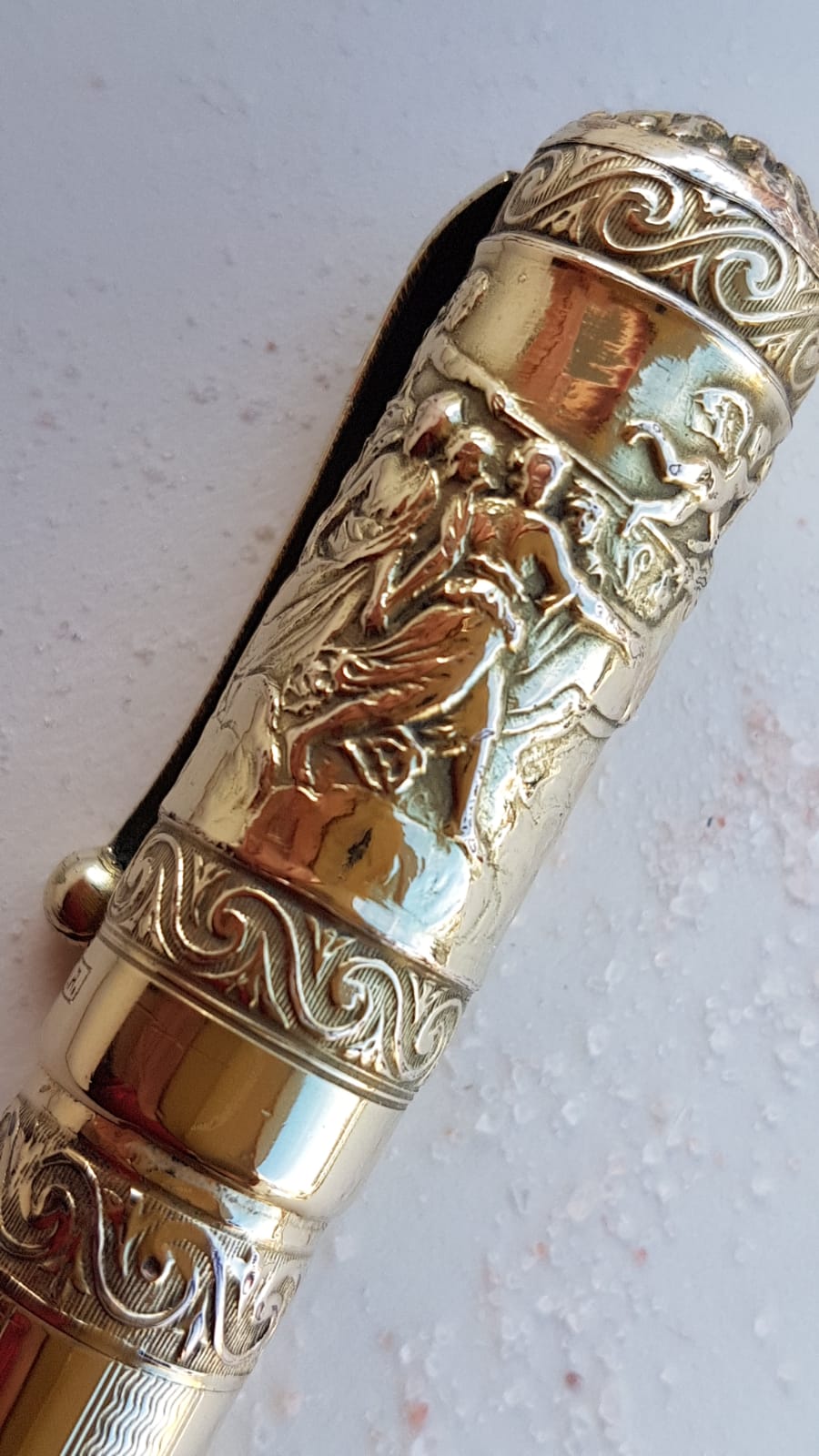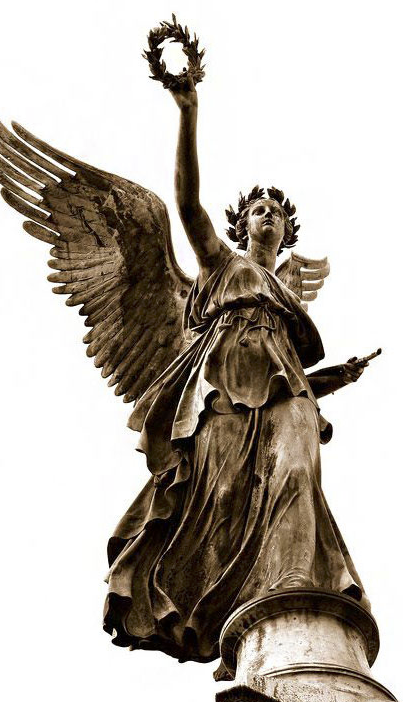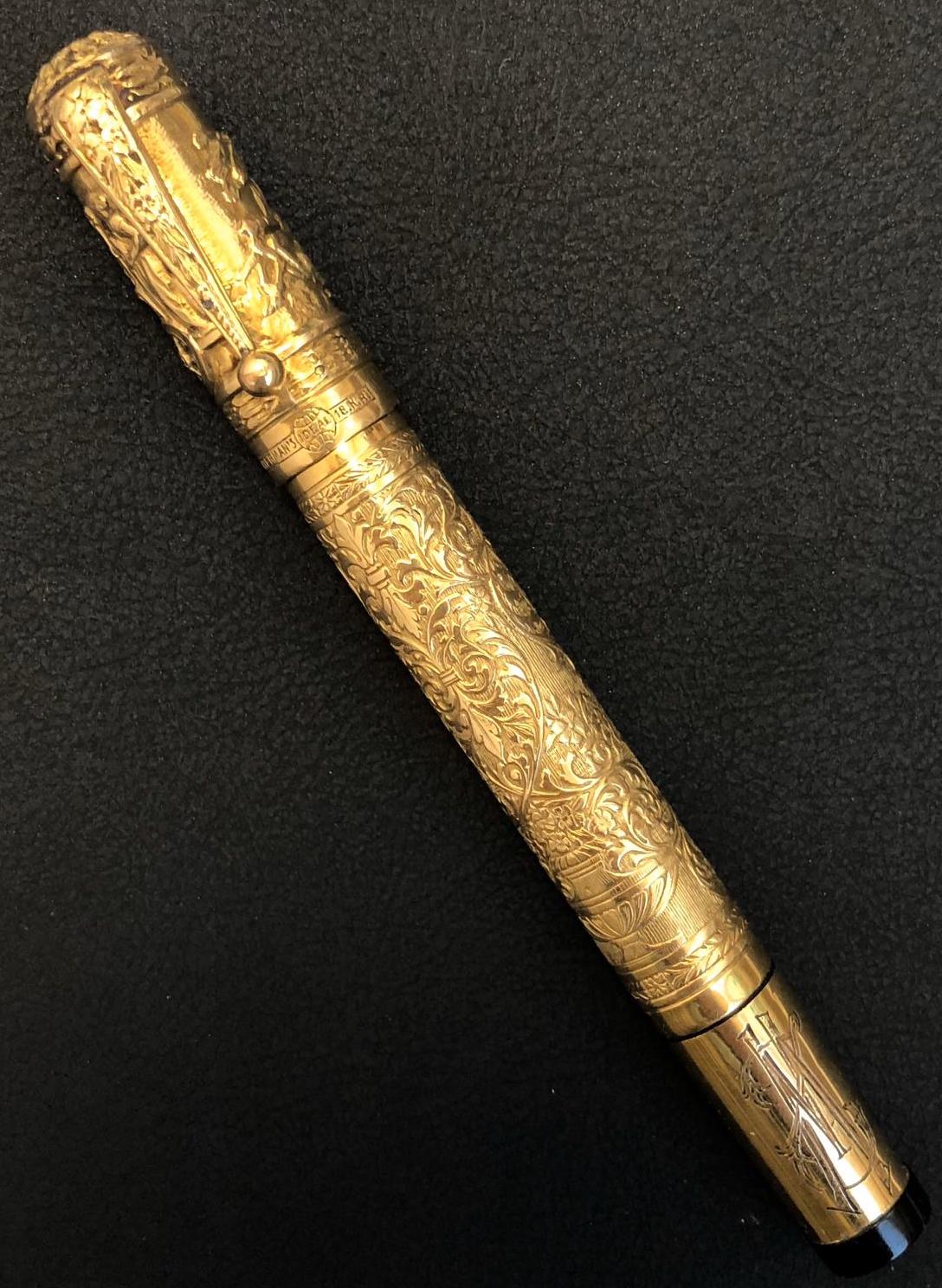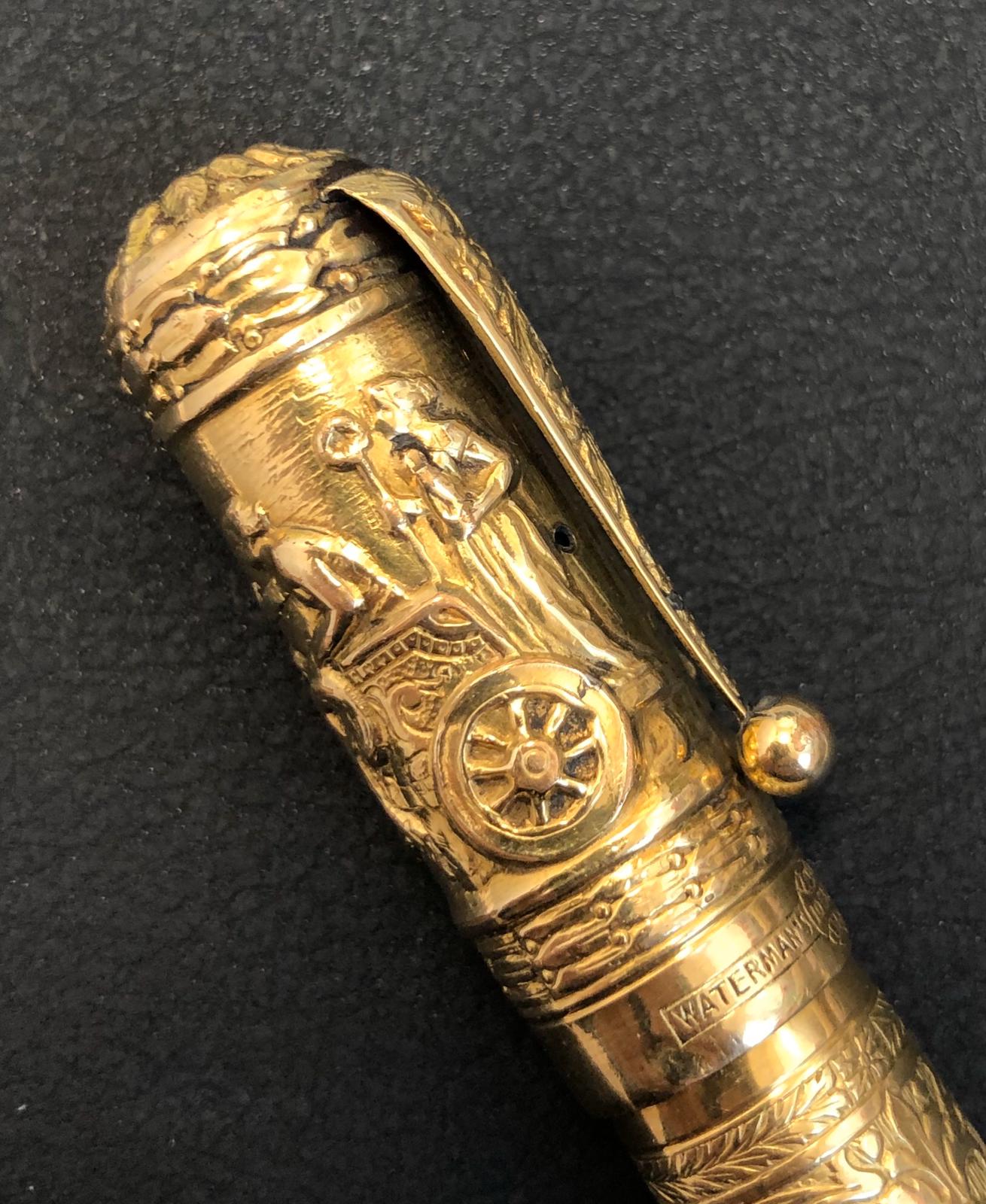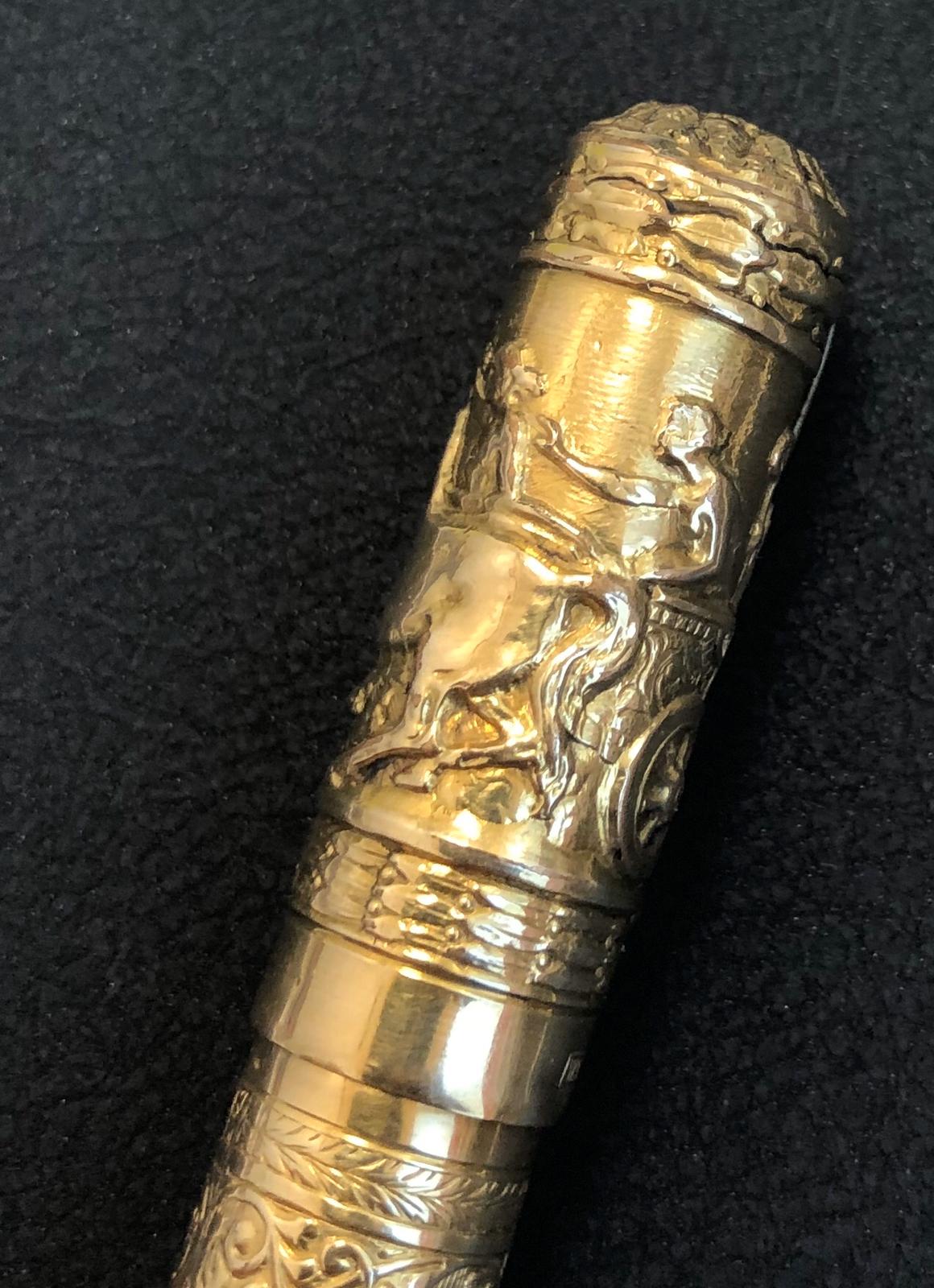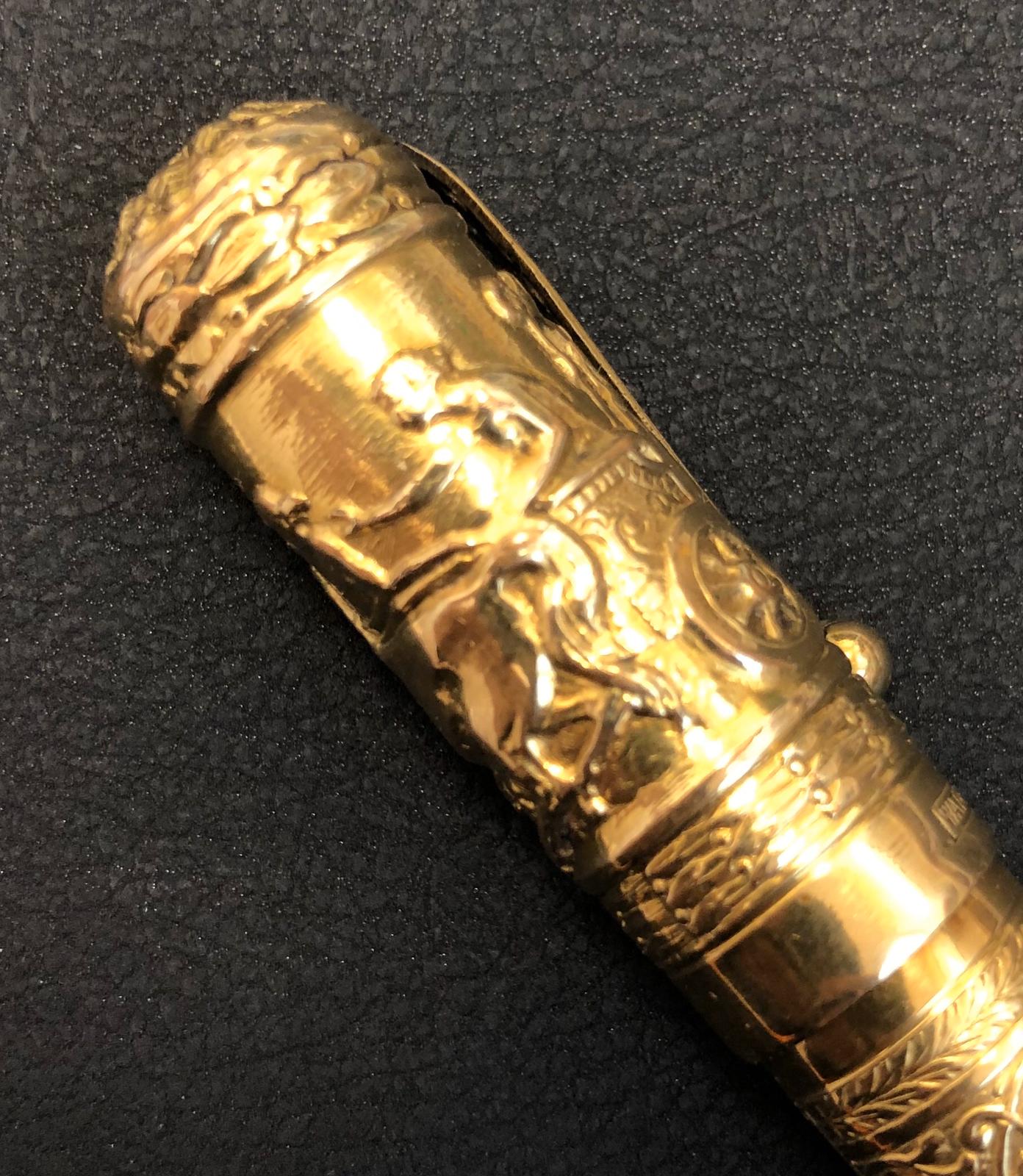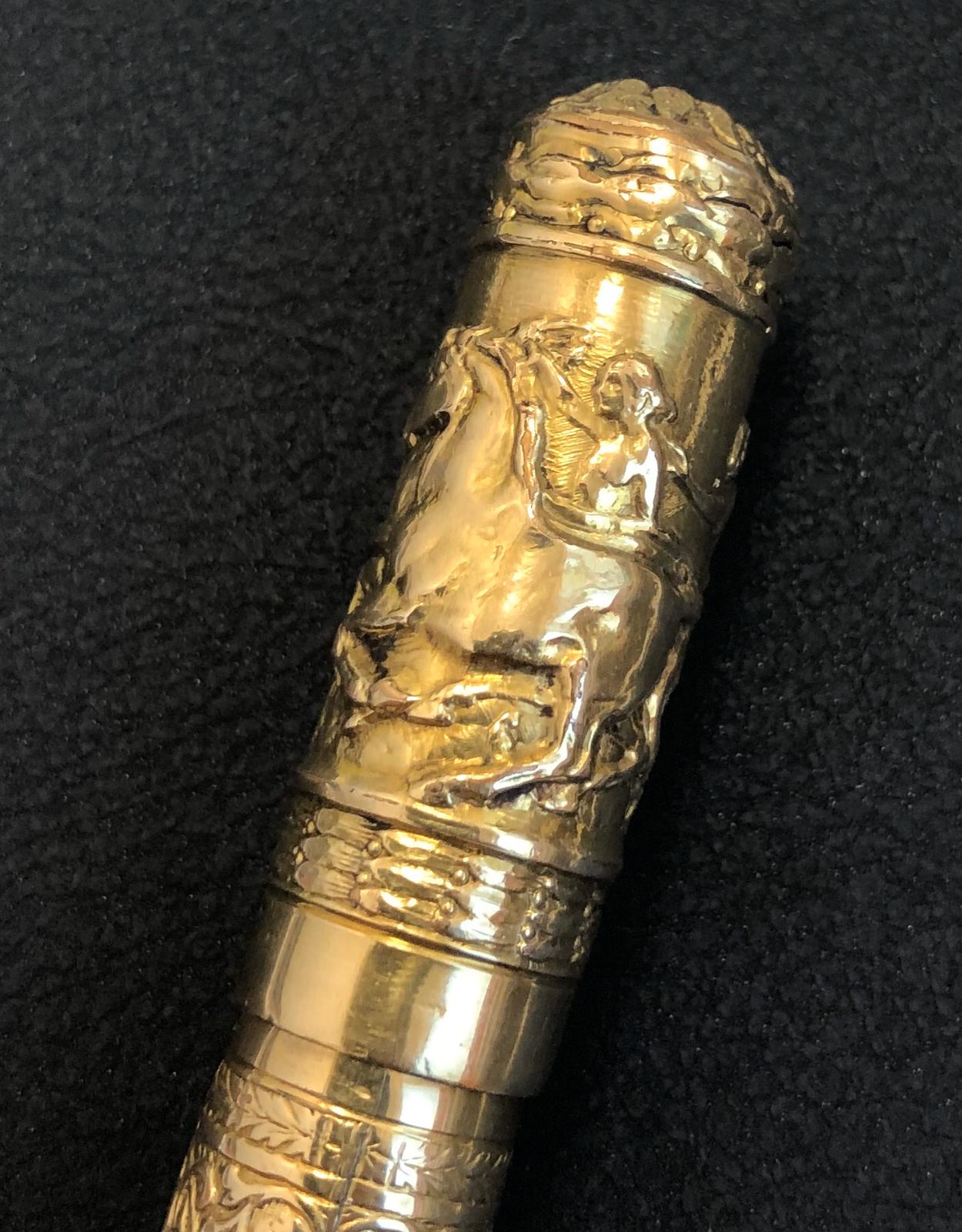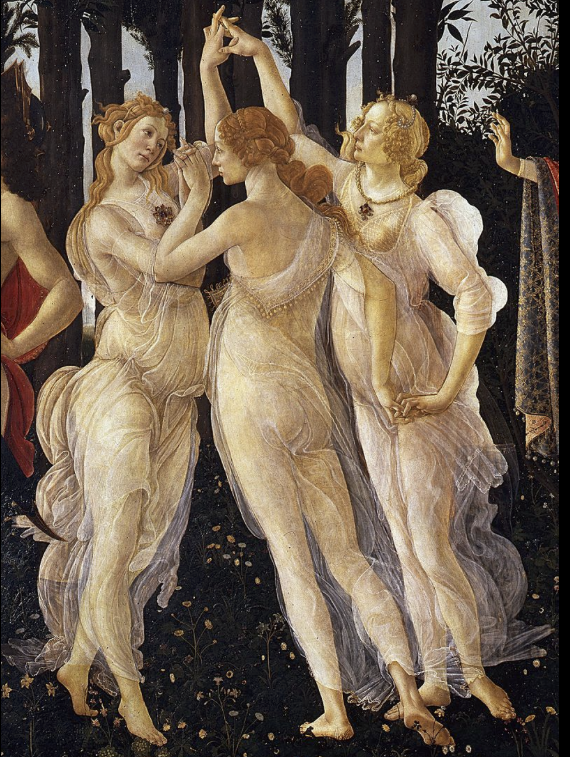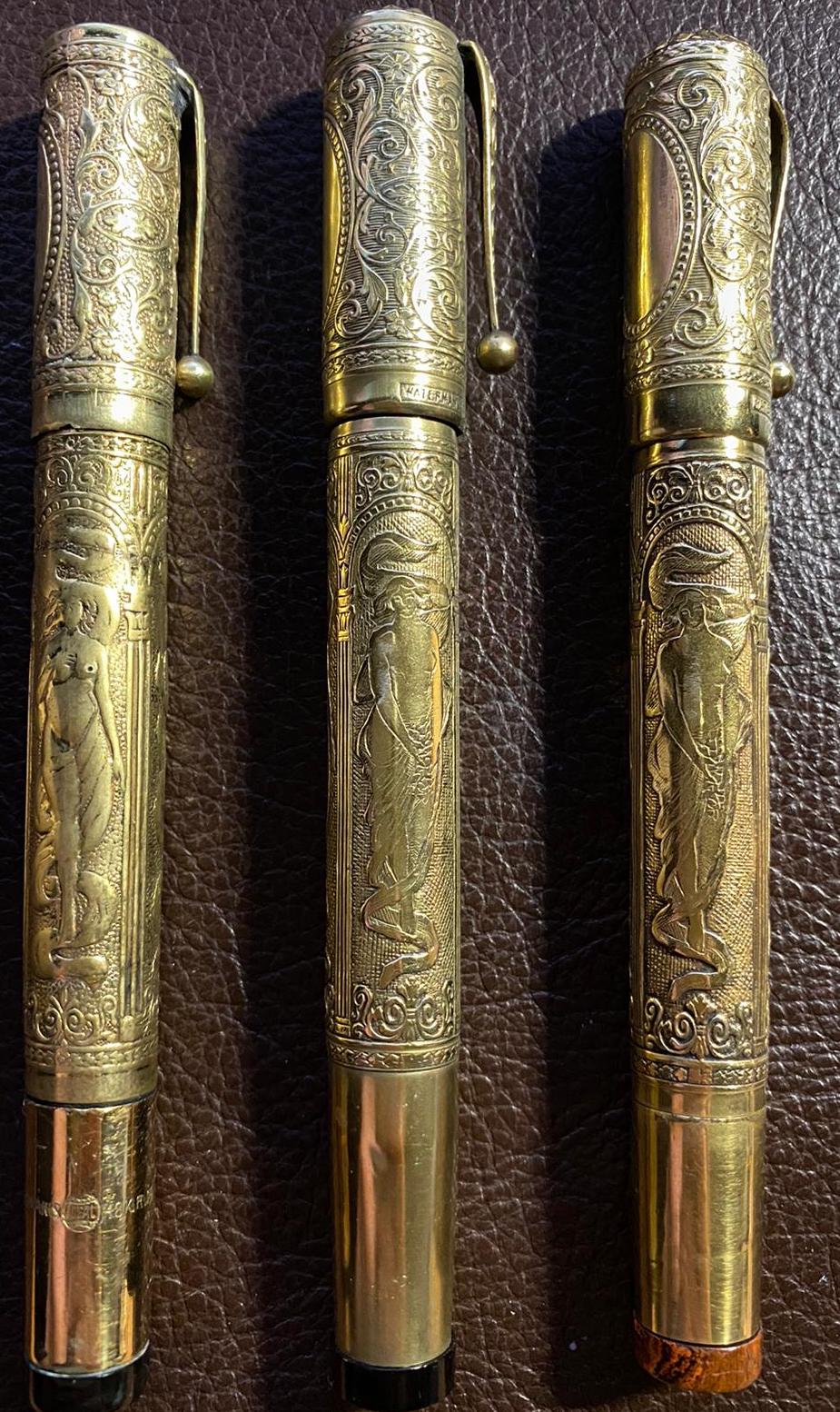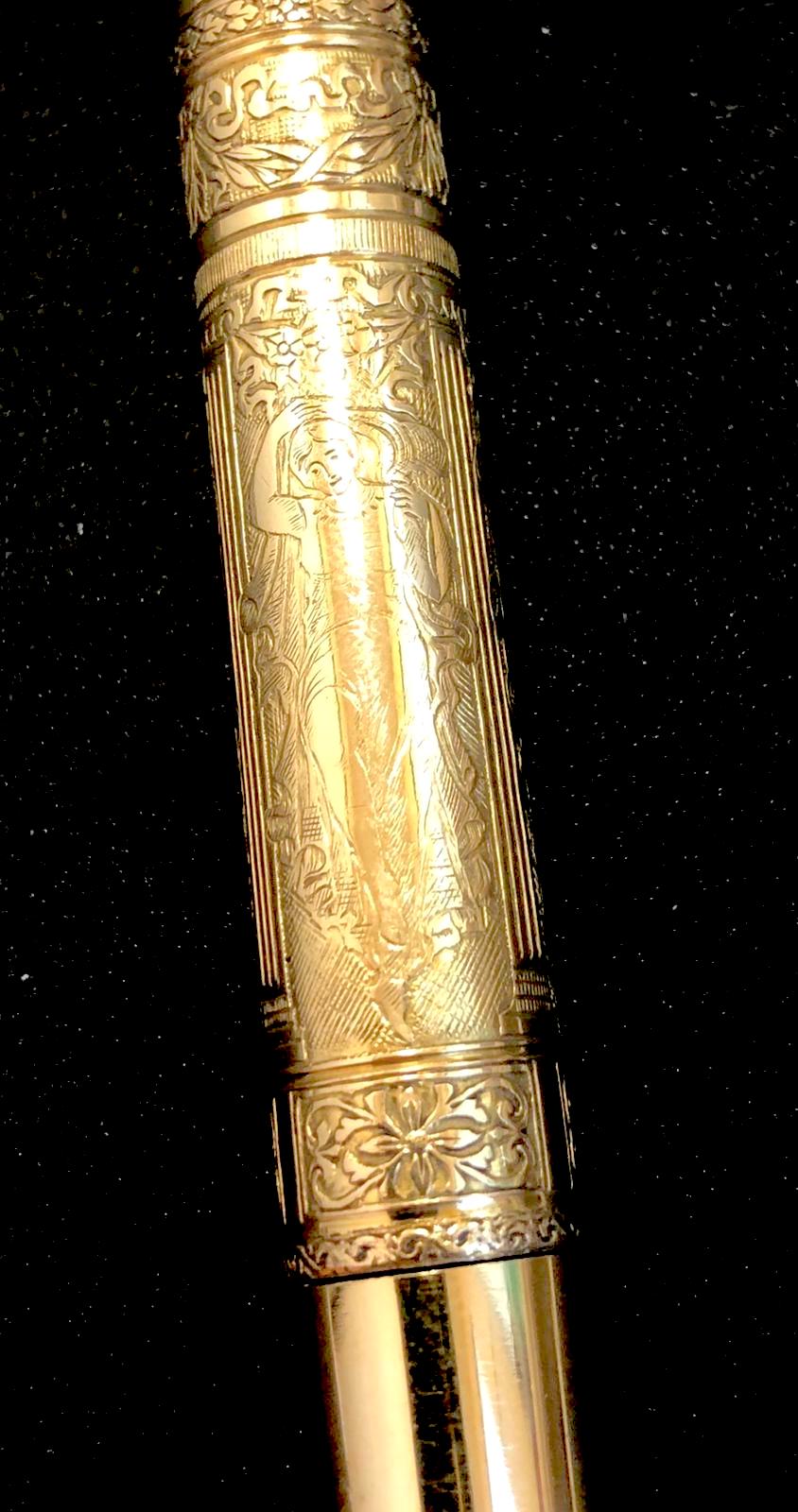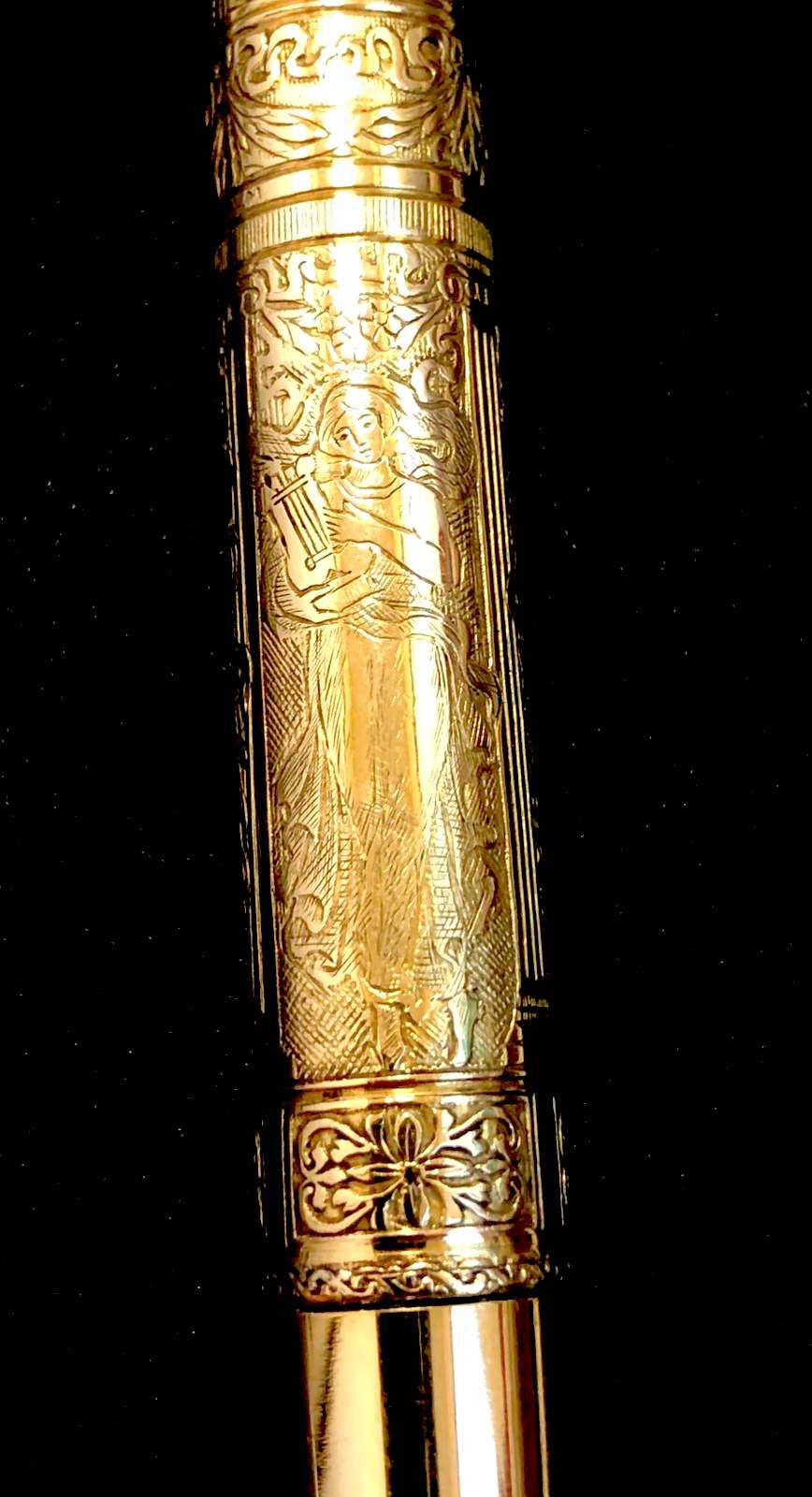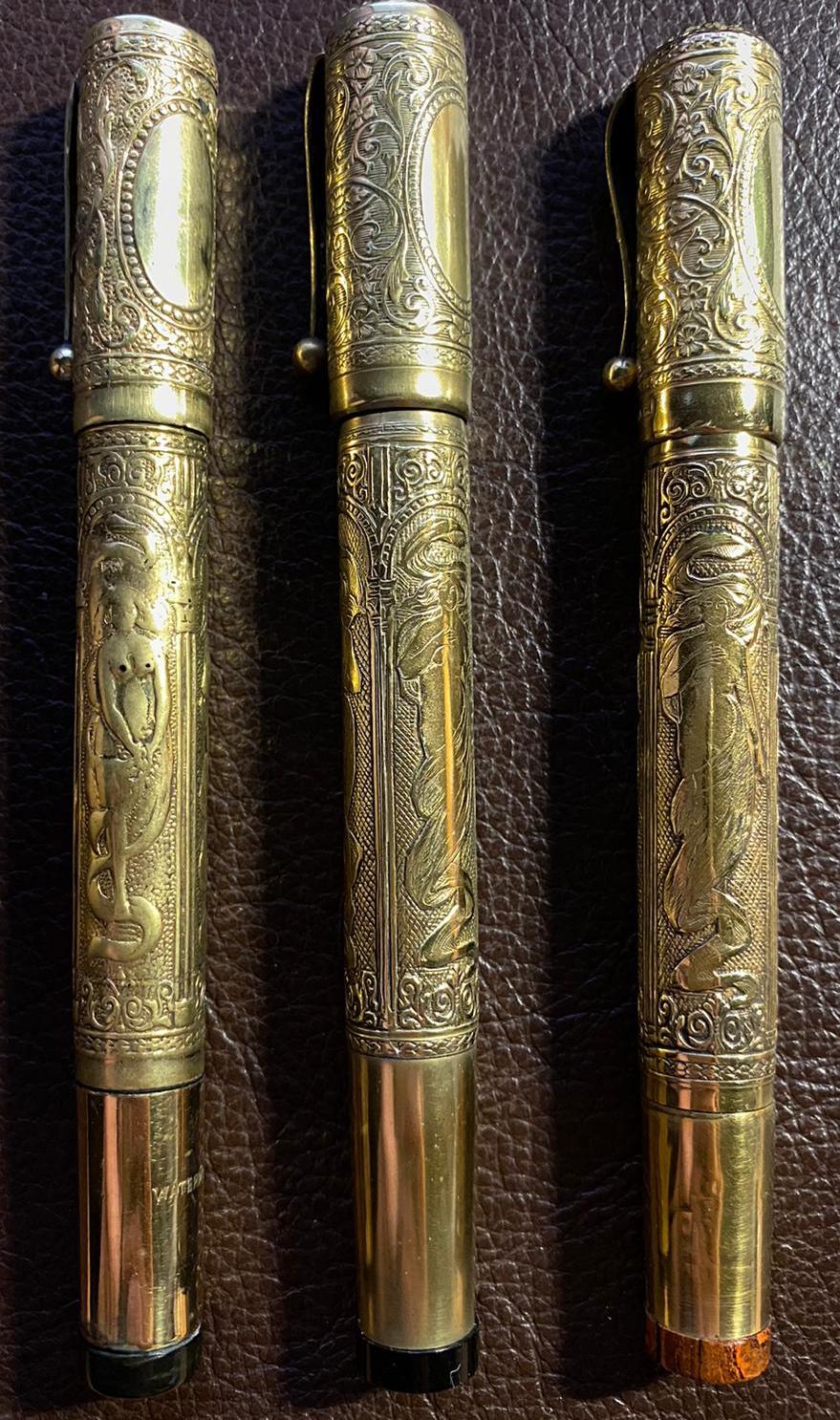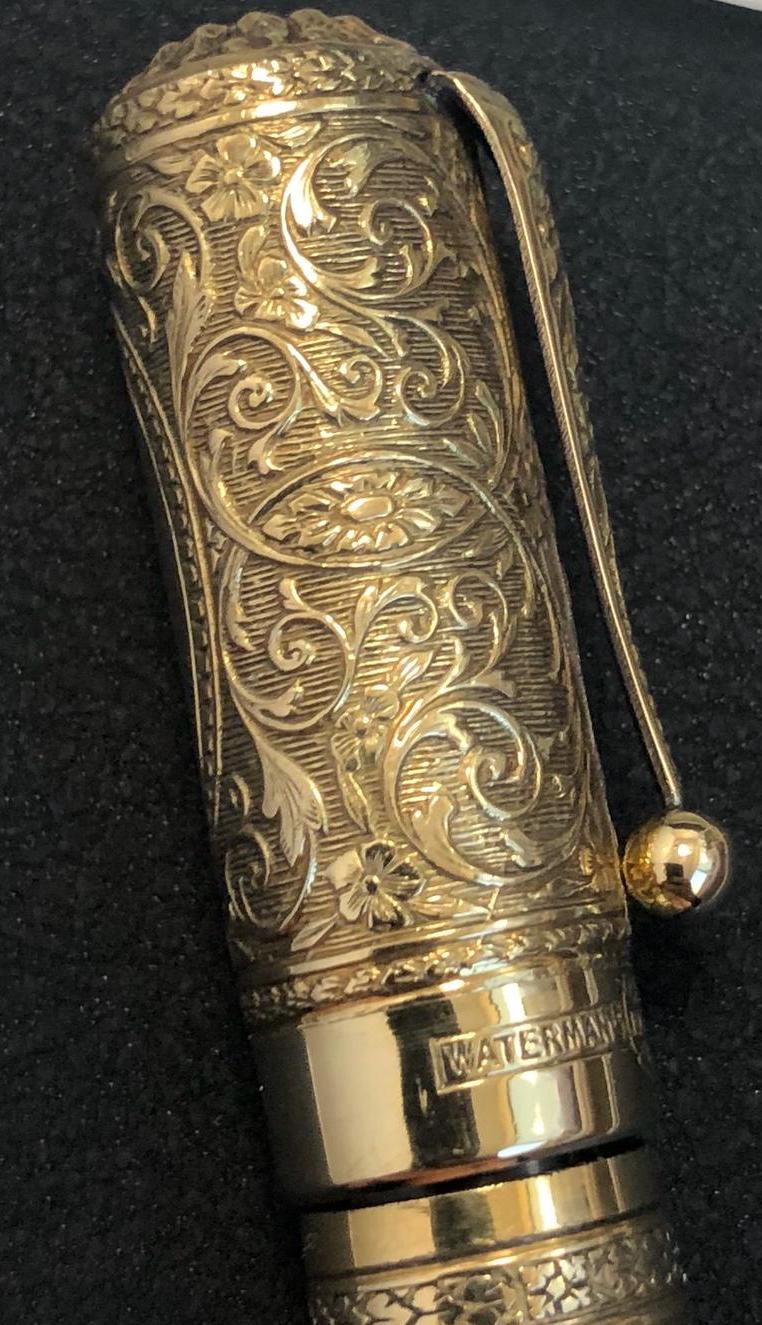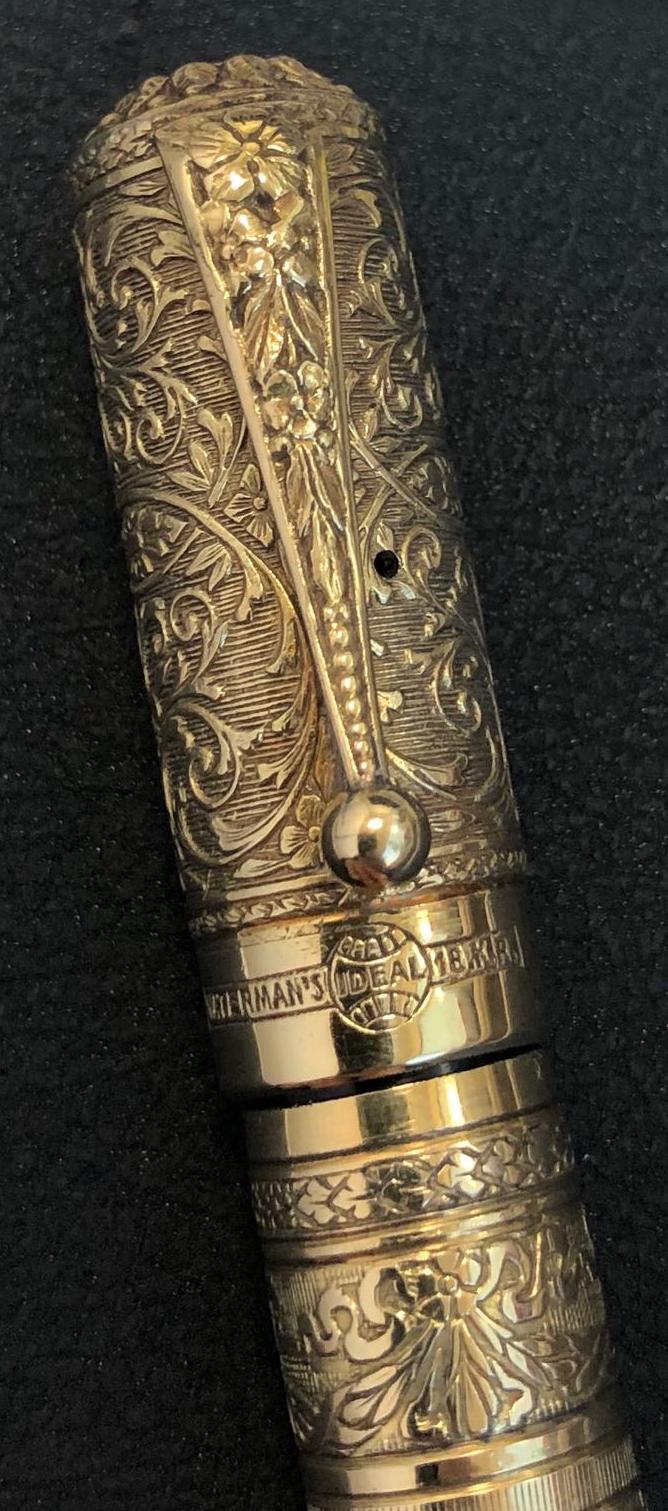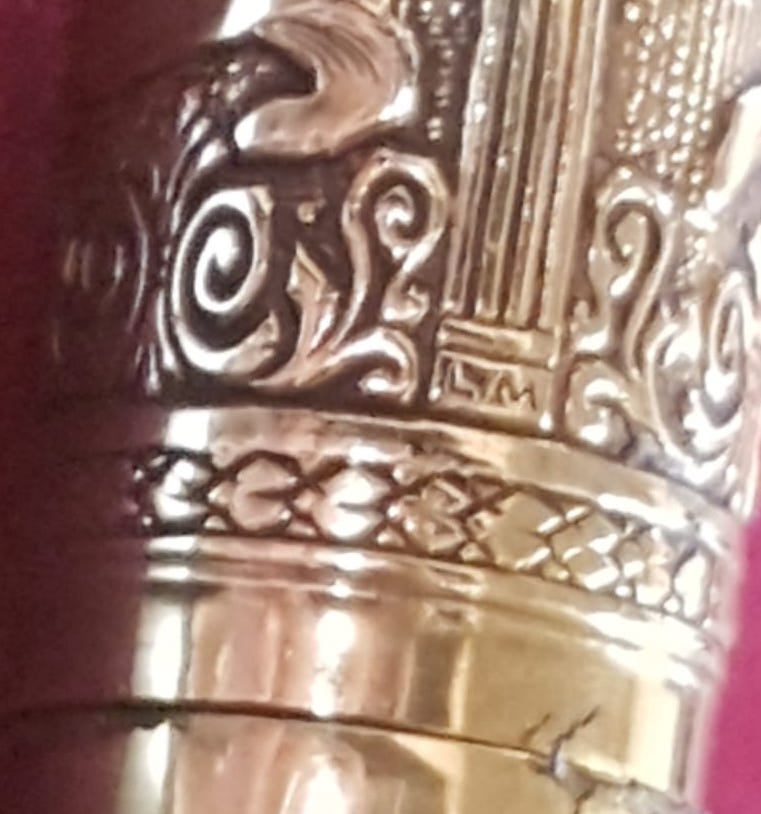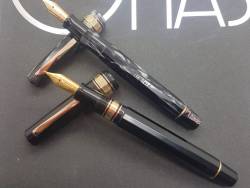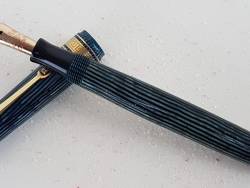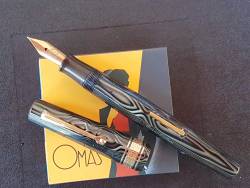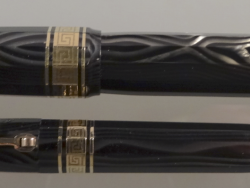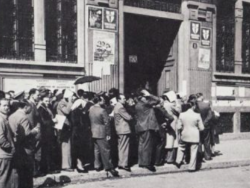WATERMAN IN ITALY UPDATE AND ADDITIONS PART 3 - Figural overlays
Within the scenario of embellishments on Waterman safety pens, many overlays exist which represents mythological, literary or historical scenes with high relief decorations.
Sometimes the decoration is present on the cap only, sometimes it is distributed on the entire barrel of the pen.
Figural overlays were meant to stir the interest of specific users.
Overlays with classical or mythological references, such as Apollo’s cart, the “Three Graces”, the “Muses”, or the so-called Pompeiana had certainly a strong appeal for people who had studied mythology, Greek and Latin. Their evocative power added value to the pen, which became more desirable because of its cultural connections.
In the same way, overlays such as“Paolo and Francesca” from Dante’s Divina Commedia, as well as overlays with Beatrice, were obviously designed to be of interest for literary professionals, be it teachers, professors or simply people who loved Dante’s poetry.
These pens were therefore even more exclusive than pens with ordinary overlays as only a few selected people were able to distinguish and understand the meaning of the figures represented in the metal.
In many cases making out the right matching of caps and barrels can turn out to be extremely complicated as many figural caps were often used with plain barrels or with linear guilloché while in other examples barrels were heavily decorated.
Catalogues of the time show a large variety of combinations and it is supposedly correct to think that in many cases the matching of caps and barrels was rather free. It is not by chance that very often barrels and figural caps have different finishing rings. The top ring on the cap is different from the bottom ring and the two rings on the barrel are different from one another and from the other two. This way, any cap could be associated with any barrel.
This is the case for instance for the pen in the picture, where the top cap band is different form the lower band.
On the other hand, there are caps and barrels which have matching decorative rings so that certain barrels are definitely to be matched with certain caps and not with others.
As a rule, experience, a bit of knowledge and a fair amount of good sense can help in the definition of the correctness of cap-and-barrel match.
Paolo e Francesca
This overlay reproduces the famous painting by Gustave Doré who illustrated Dante’s Divina Commedia.
The scene with Paolo kissing Francesca while they fluctuate in the wind is developed to cover the entire barrel of the pen. The cap is decorated accordingly, to reproduce the same image Doré offered to readers of the Divina Commedia.
This same decoration can be found on other brands of safeties, too, such as Everest and Universal.
The cap top is decorated with Dante's head and the verses from the Divina Commedia are reproduced on the back of the cap.
Profane and Sacred Love by Tiziano
Here the famous 1515 painting by Tiziano is reproduced on the cap. The barrel is plain and smooth. A barrel like this could be used to match any kind of decorated cap.
As for Paolo and Francesca, Universal and Everest pens exist with the same decorative scene.
Apollo’s cart and Aurora
Here we have a reproduction of Guido Reni’s painting dated 1614.
Note the matching decorative rings on the cap and the barrel, which makes this barrel appropriate for this cap. The same decorative bands may have been used on other figural caps, too, so that this barrel could match various caps. This was jut a wise productive and commercial policy, even if it can drive today’s collectors nuts!
Nike’s cart
In this pen the cap is filled with the powerful presence of galloping horses so that the general impact of the decoration expresses strength, speed and force.
The female figure behind the driver represents the Athena-Nike Goddess, as depicted in the Greek temple built in Athens in 425 b.C. This Goddess is the synthesis between Minerva and Nike: she has no wings and holds the sacred owl in one hand (Minerva) and the laurel wreath in the other (Nike).
The typical image of the Nike Goddes generally has wings and the laurel wreath in her left hand.
The barrel in this case is heavily decorated.
As for many other subjects of decoration, this scene can be found on overlays with different names than Waterman.
The Muses/ The Thre Graces/ The Pompeiana
The number of figural overlays on Waterman pens is very wide. A few of them can be connected to very famous paintings (Paolo e Francesca, Dante and Beatrice, Sacred and Profane love etc.) The famous “Pompeiana” overlay, the “Three Graces”, the “Muses” are all to be related to famous works of art, such as Botticelli's female figures or Canova's sculpture The three Graces.
The Pompeiana overlay, in particular, exists in at least three different versions. The scene is the same but many details of the background and the position of the veiled woman change according to the workshop which produced the overlay.
These very evocative overlays must have been very successful at the time of production; the Pompeiana overlay was in fact used for ads on magazines and publications.One of the various versions of this well-known overlay was commissioned by the Cavaliere workshop in Milan to the famous artist Luigi Mazza who took inspiration from the classical iconography.
The female semi-nacked veiled image is placed between greek columns. The same principle is used to create the setting for the overlay with the Three Muses and the Three Graces, which are very similar.
The typical cap mostly used to match this type of overlays is richly decorated with an oval shield on the back where initials or dedications could be engraved.
Luigi Mazza's Pompeianas are signed with the artist's initials, "L" and "M" in capital letters placed at the basis of one of the columns.
A few figural overlays also exist with religious and sacred images, thus being particularly appealing for people with a deep sense of devotion.
Finally a few figural overlays show famous monuments (San Marco in Venice, Superga in Turin etc.) and were likely produced either as souvenirs or as a celebration of the architectural beauty of these buildings.
CREDITS:
Fabio Balestri, Jor Lin, Mario Pinelli, Luigi Maccagli,

